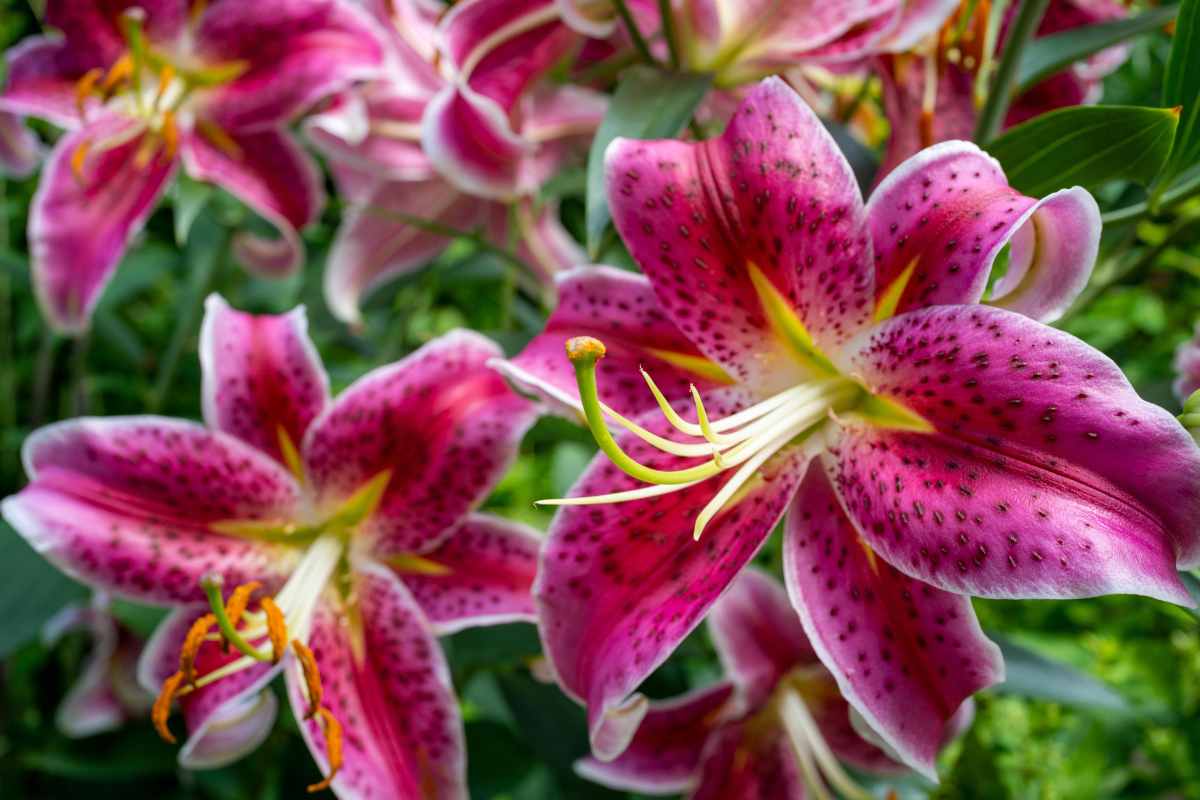
How to Plant, Grow, and Care for Your Lilies
When thinking of lilies, does it evoke a sense of elegance, sweet fragrance and long-lasting colour? Do you have a favourite variety of lilies? Lilium is a huge genus of herbaceous flowering plants, also known as lilies. Sometimes flowers get the name lily tagged on like Calla Lily (Zantedeschia), Canna Lily (Canna) or Climbing Lily (Gloriosa). This article will answer all your questions on the hardy, easy-to-grow, true lilies – lilium.
The most common lily types are early summer flowering (Asiatic, and Martagon), mid-summer flowering types (Trumpet, LA (Longiflorum x Asiatic), and OA (Oriental x Asiatic) and late summer flowering types (OT (Oriental x Trumpet), Oriental, Tiger, and Trumpet). With a bit of planning, you can have lilies gracing your garden all season long!
Table of Contents
Types of Lilium
Asiatic Lilies
These are some of the earliest lilies to bloom and are known for their fragrance-free brightly coloured upward-facing blooms. Asiatic lilies are available in a range of heights. For containers and edging look for patio-size versions that max out at 60 cm (24”) and for mid-border areas or cut flowers, there are classic taller varieties that will grow to 120 cm (48”). Asiatic lilies will usually bloom from May through July. Thriving in some of our coldest Canadian climates, Asiatic-type lilies are hardy to zone 2. If you are looking for plants for high traffic or cut flower garden areas, check out the pollen-free, scent-free, double-flowering kiss lilies. These beauties check all the boxes for sharing in garden bouquets too.
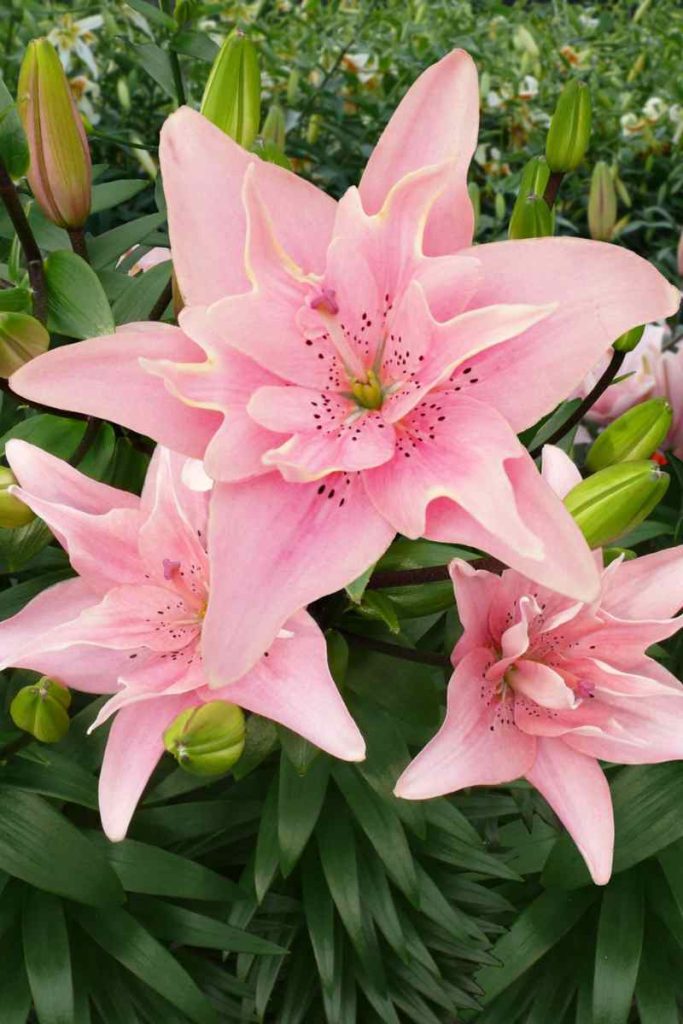
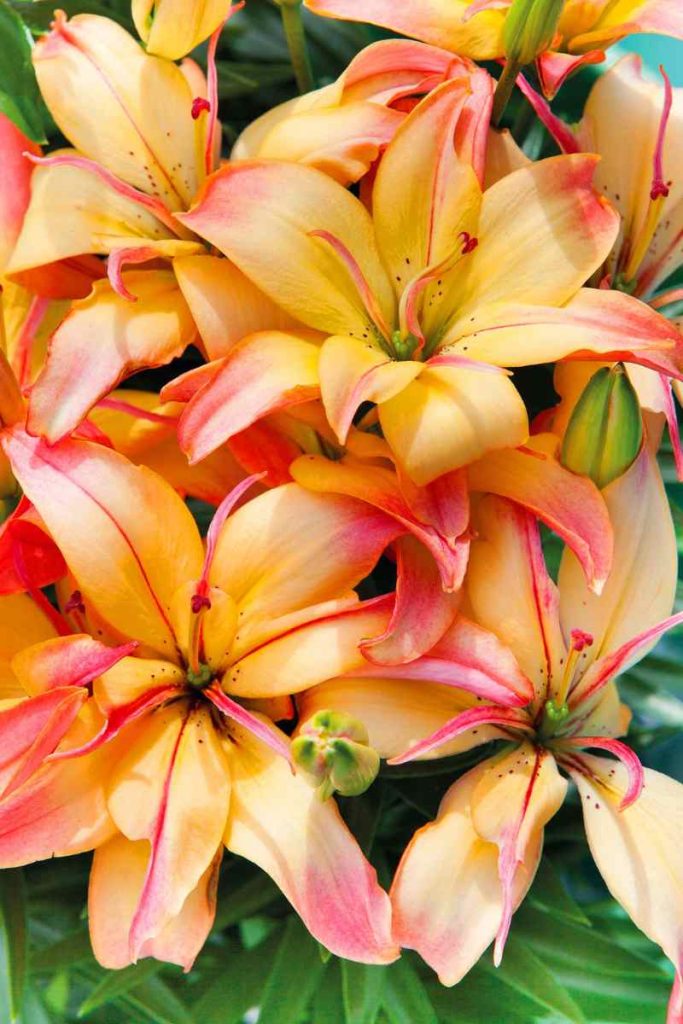
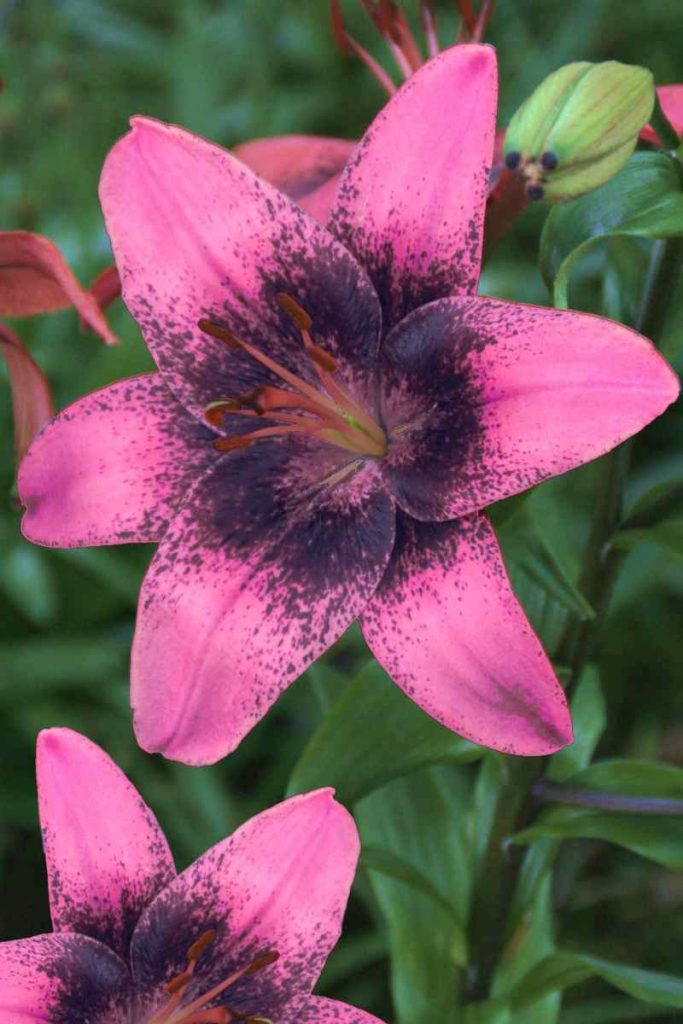

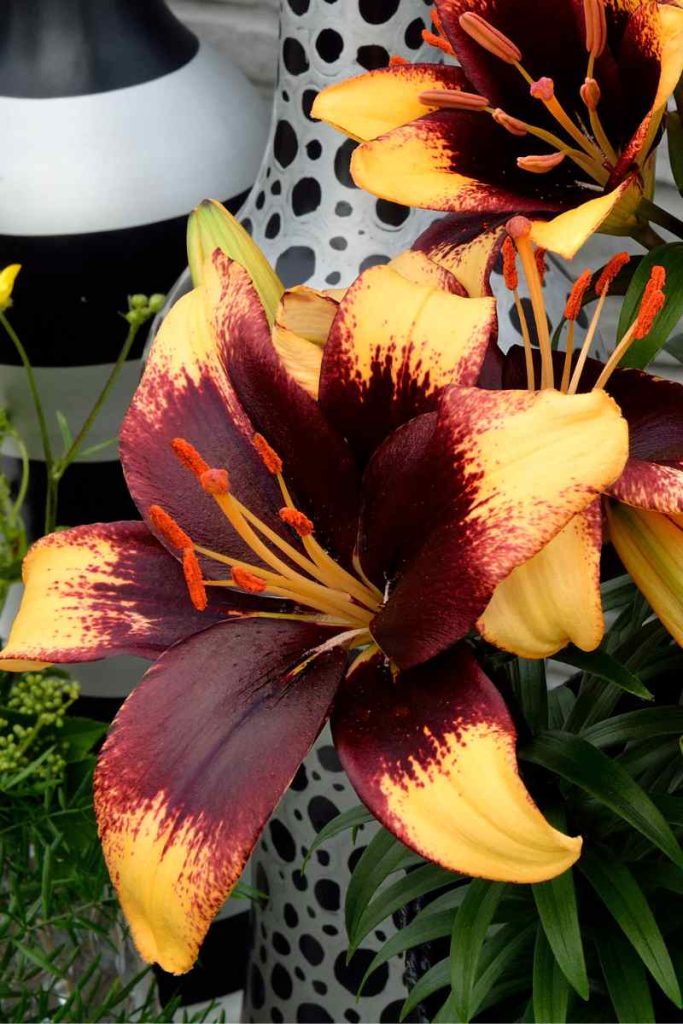
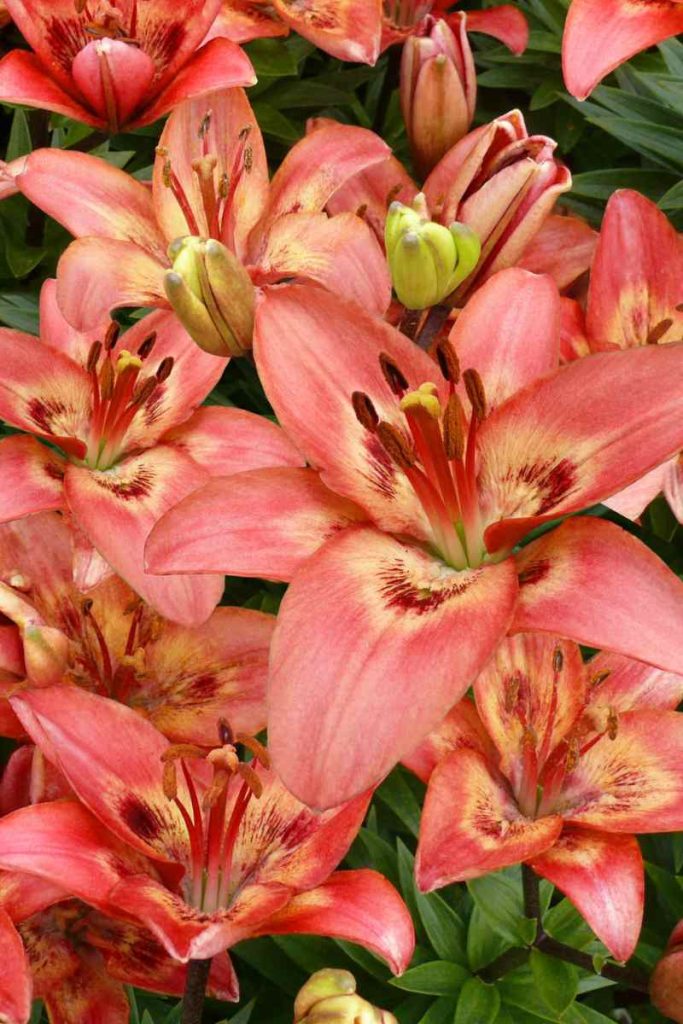
Longiflorum Lilies
Be enticed by the scent and stay for the beautiful blooms! These alluringly scented blooms are sought after to make some of the most wonderful perfumes with notes of sweet, spicy, musk and floral. As the traditional Easter lily, these are widely recognized and forced for mid-spring blooming. When allowed to grow and flower naturally in the garden you will have 120 cm (48”) tall stems of blooms gracing your garden from July to August. Hardy to zone 3, Longiflorum lilies are a perfect addition to your cut flower garden.
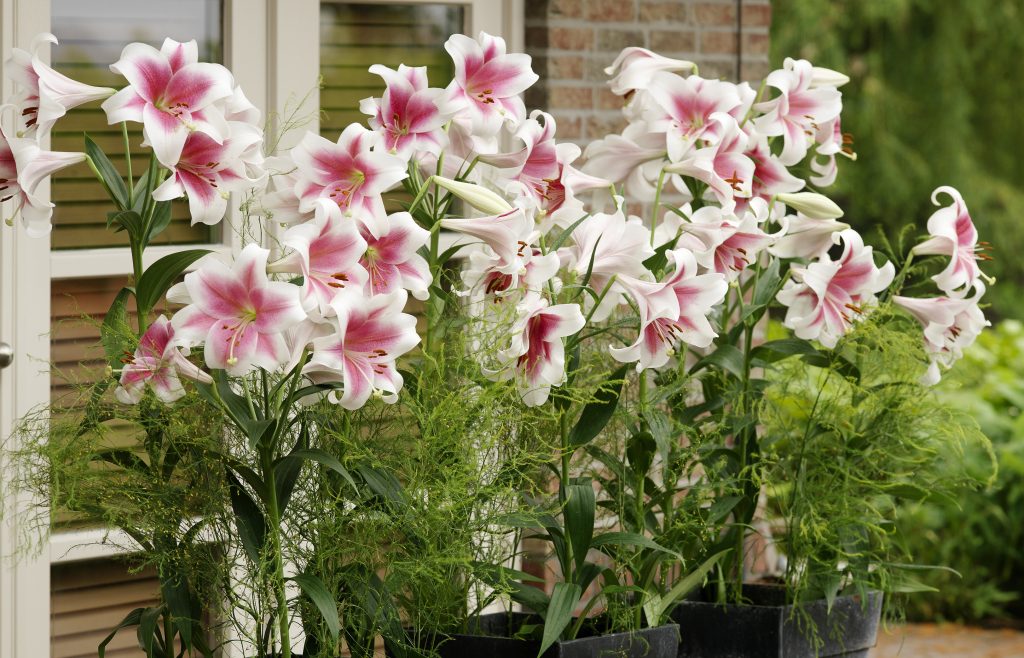
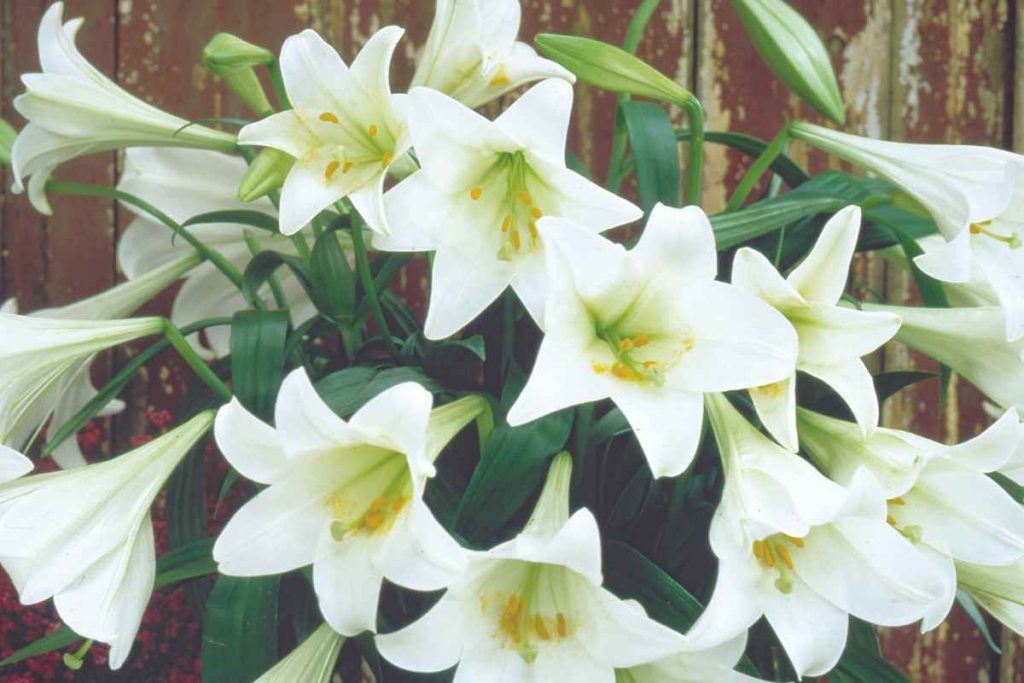
Martagon Lilies
These lilies are also known as Turk’s cap lilies. Each spike will be loaded with up to 50 buds, opening to reveal 5 cm (2”) blooms that have the petals reflexed and curled back to the stem. Martagon lilies show their fragrant blooms in early summer and grow to heights of 80 cm (32”). These are a favourite for pollinators as they have easy access to the nectar. You can plant these hardy to zone 2 varieties in part-shade to full sun areas and they will brighten your woodland spaces.
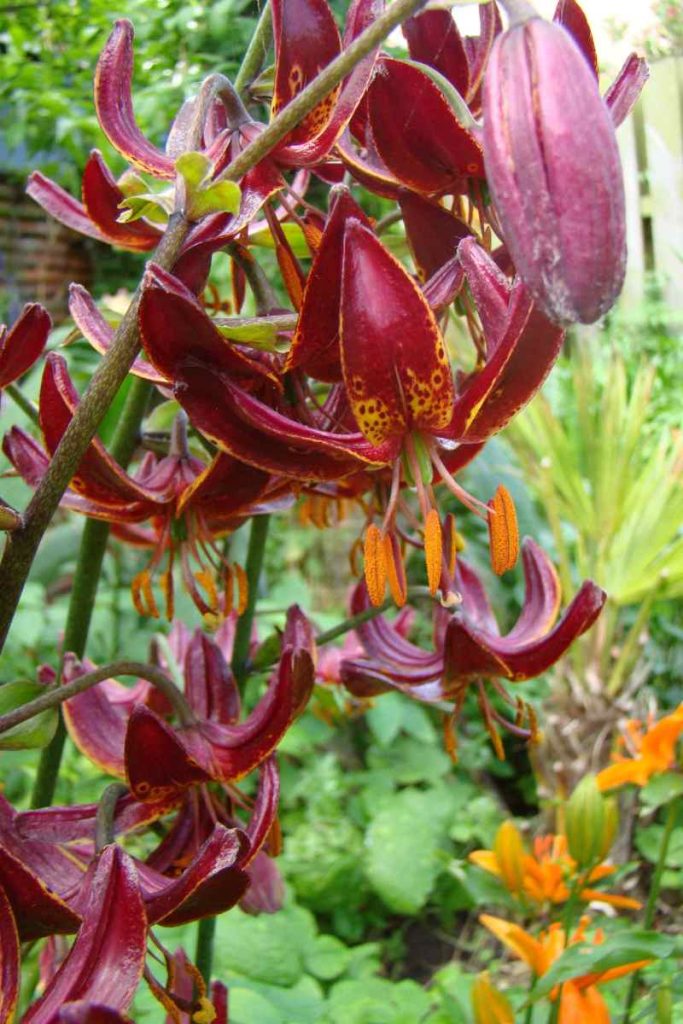
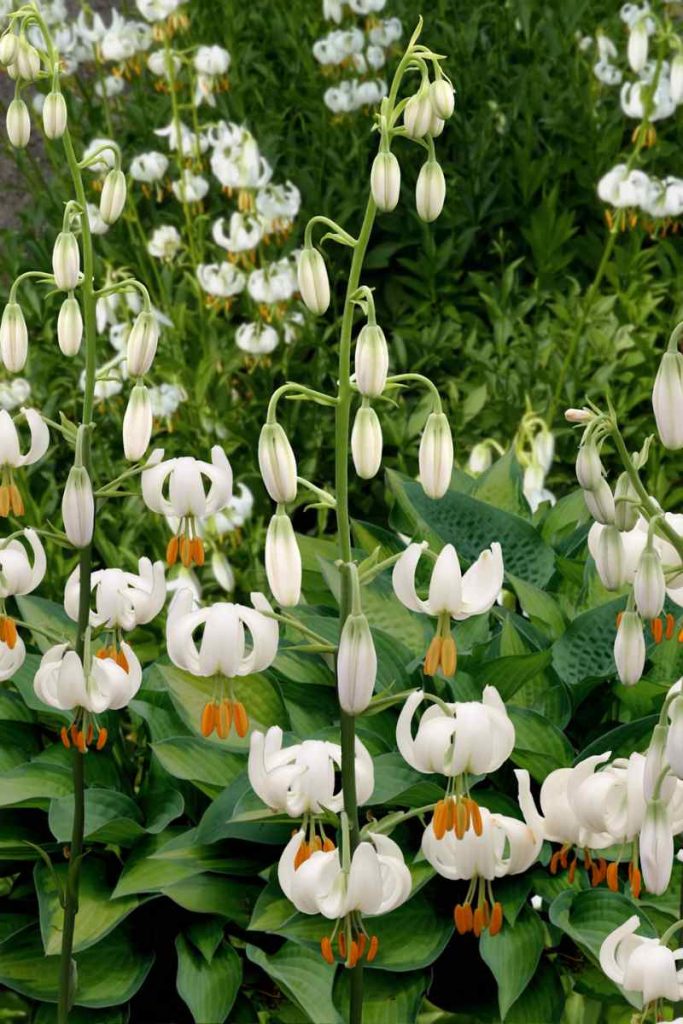
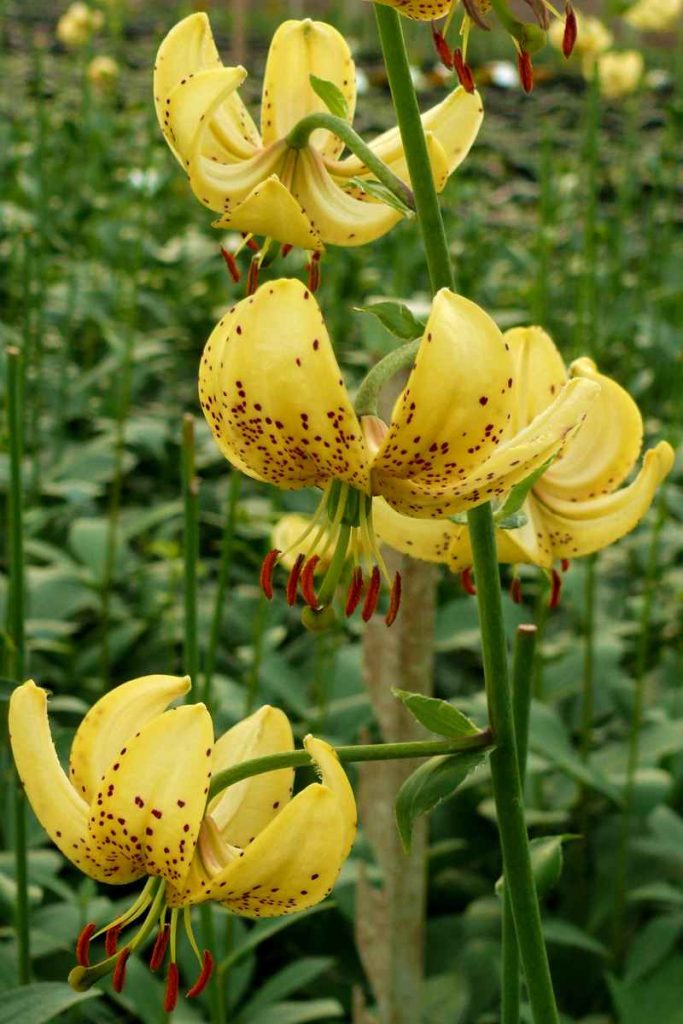

Oriental Lilies
A garden must have! Enjoy wonderfully perfumed blooms that grace gardens in summer from late July to September. The huge showy outward-facing blooms create stunning focal points in the garden. Oriental lilies are available in a full range of colours and heights, from the shorter patio and edging varieties that max out at 60 cm (24”) to the classic taller varieties that reach 120 cm (48”). If you are looking to create decadent bouquets, try the double flowering types in the Roselily series as they have pollen-free blooms and a lighter scent. Oriental lilies are hardy to zone 2 or 3 and flourish in part shade to full sun areas. The popular Oriental Lily Stargazer is one of the most well-known for its fragrance and form.


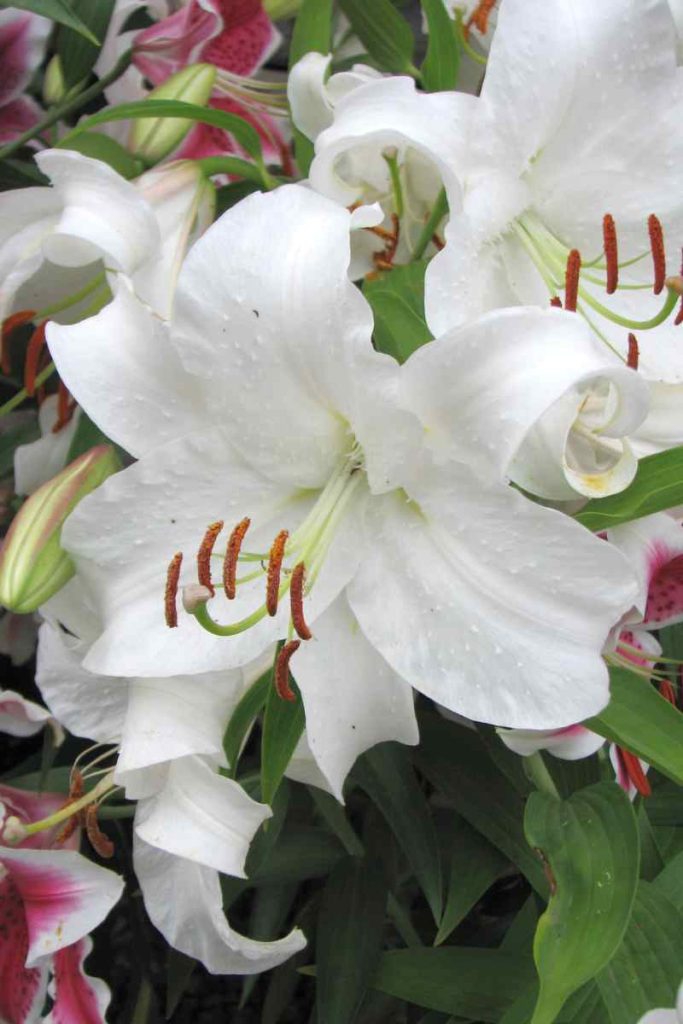
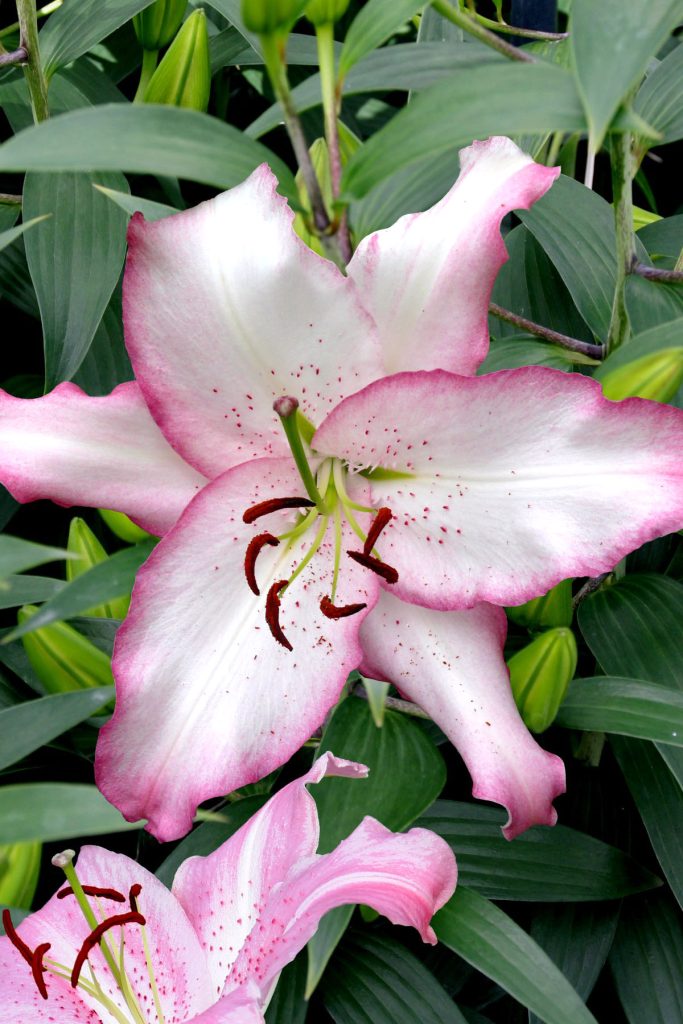
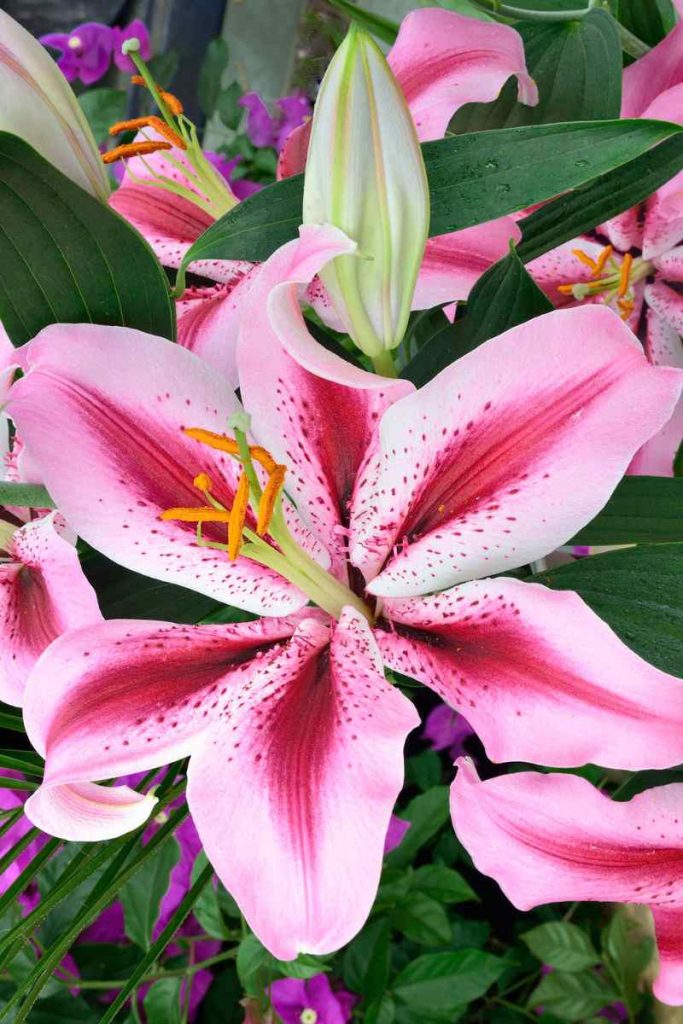
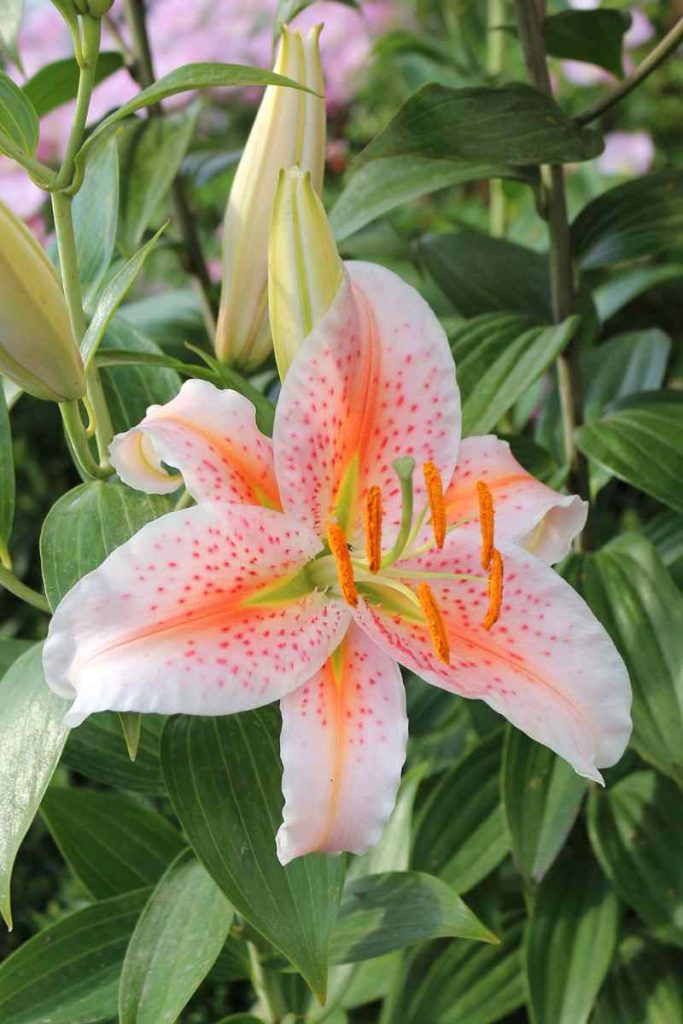
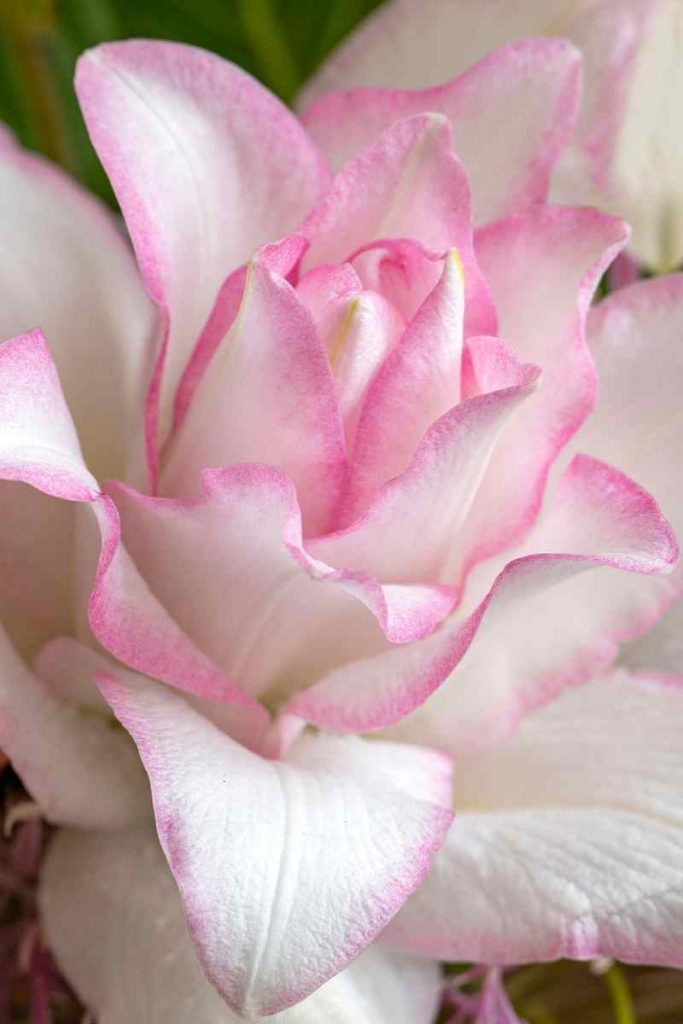

Species Lilies
If you are looking for wild and unique lilies, then look no further than the species types. The bloom shape and growth pattern for each variety are unique. Plant these types of lilies in full to part sun and they will be an eye-catching addition to your mixed borders.
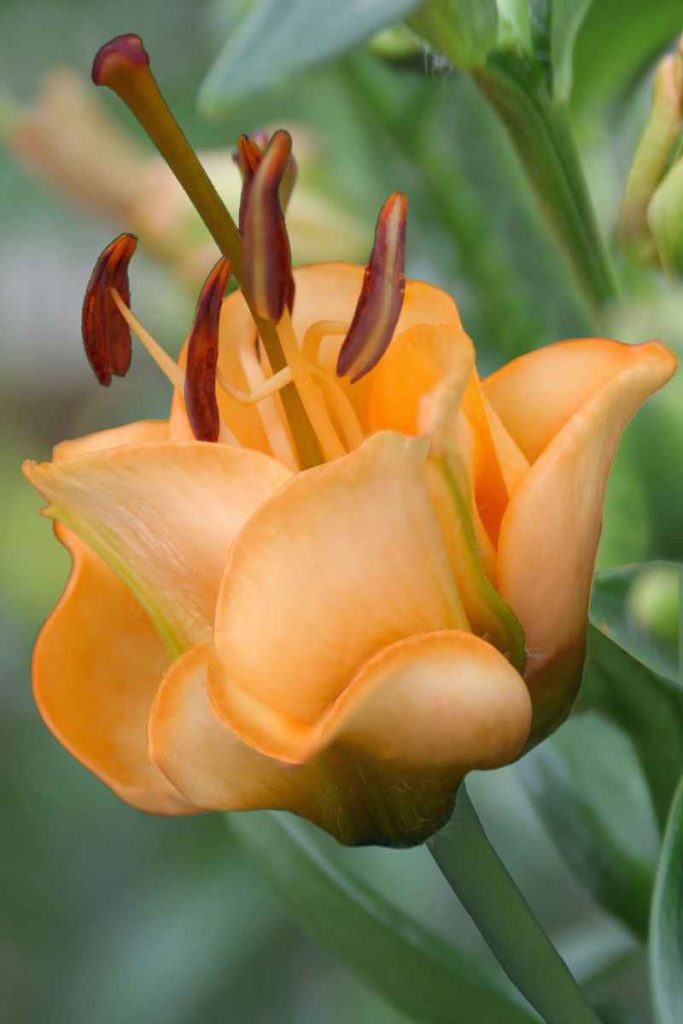
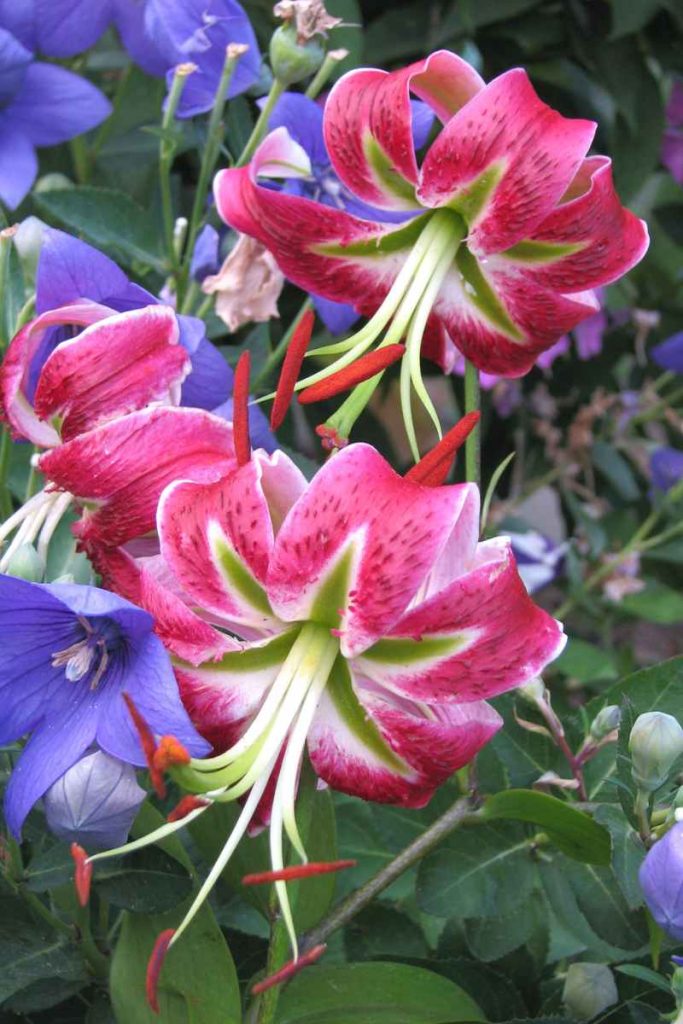
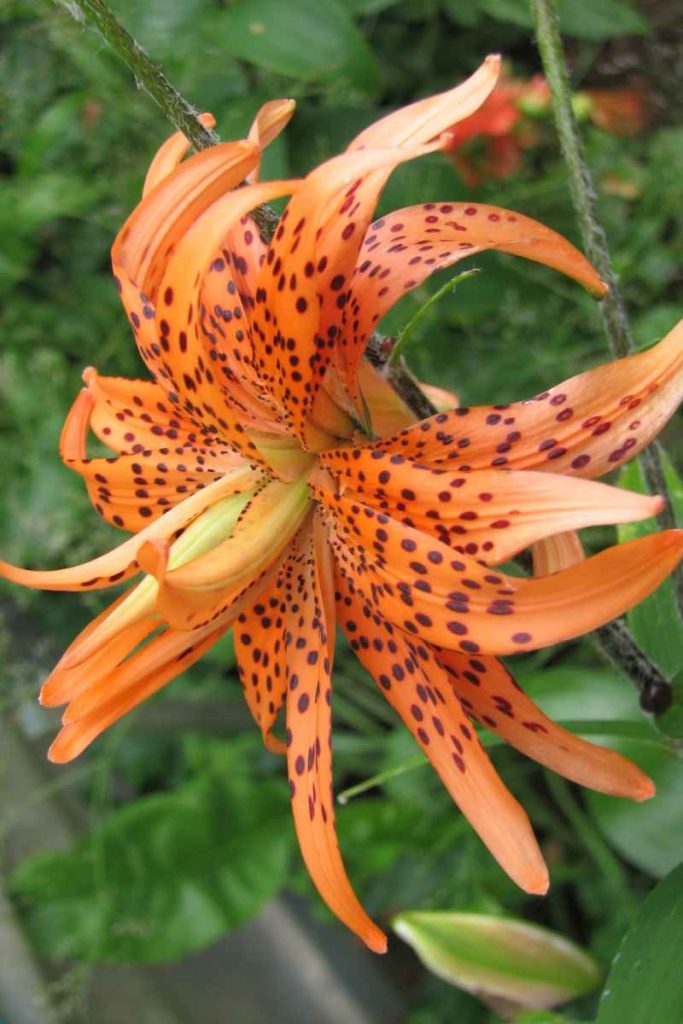
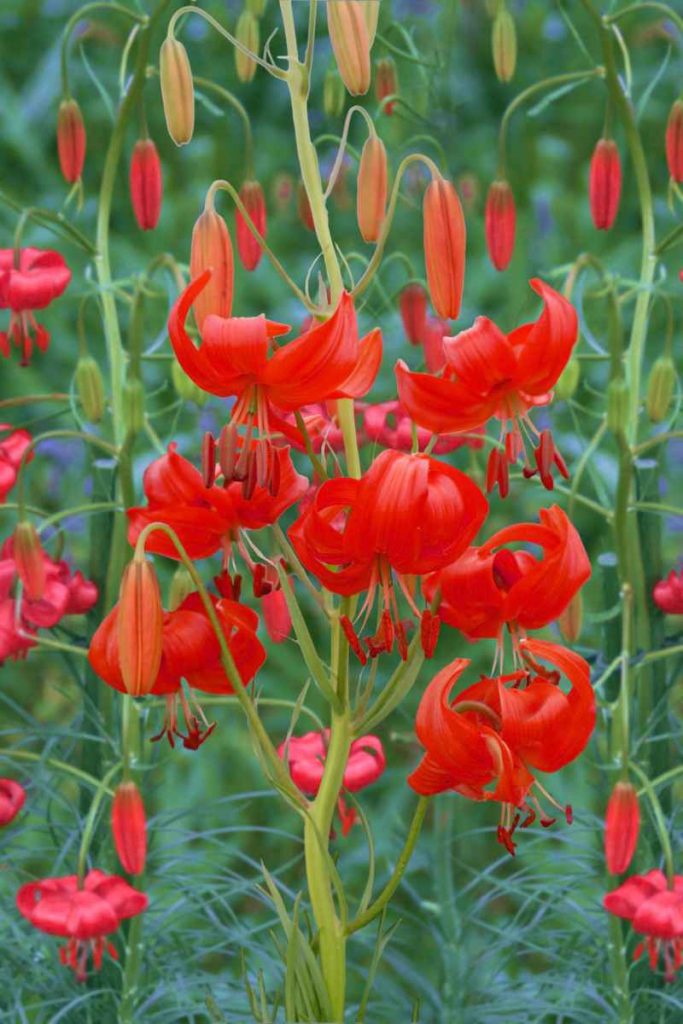
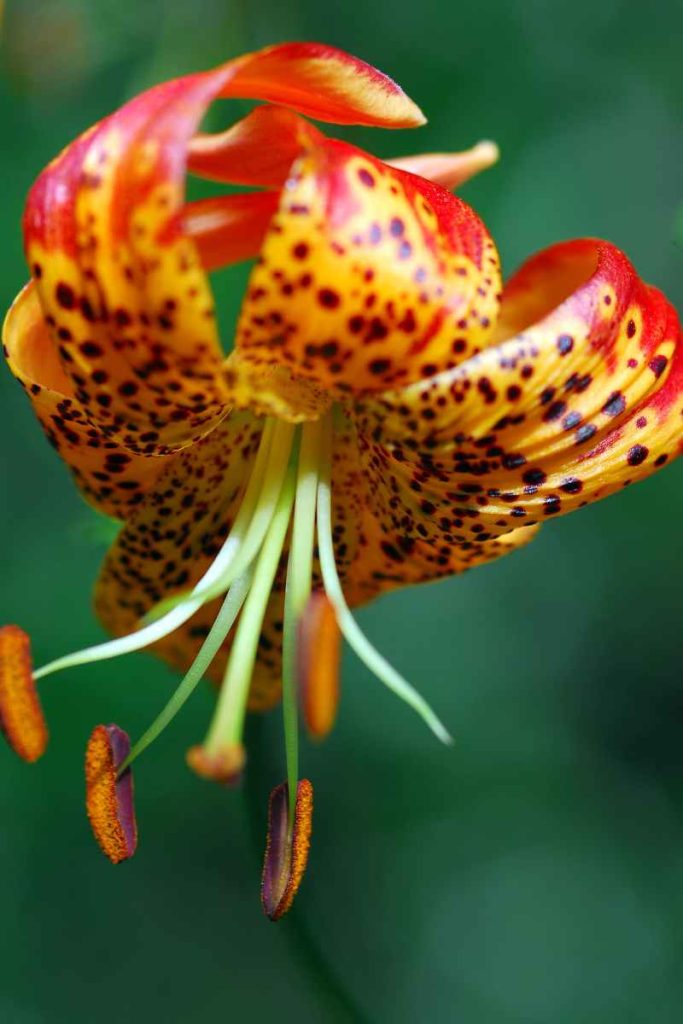
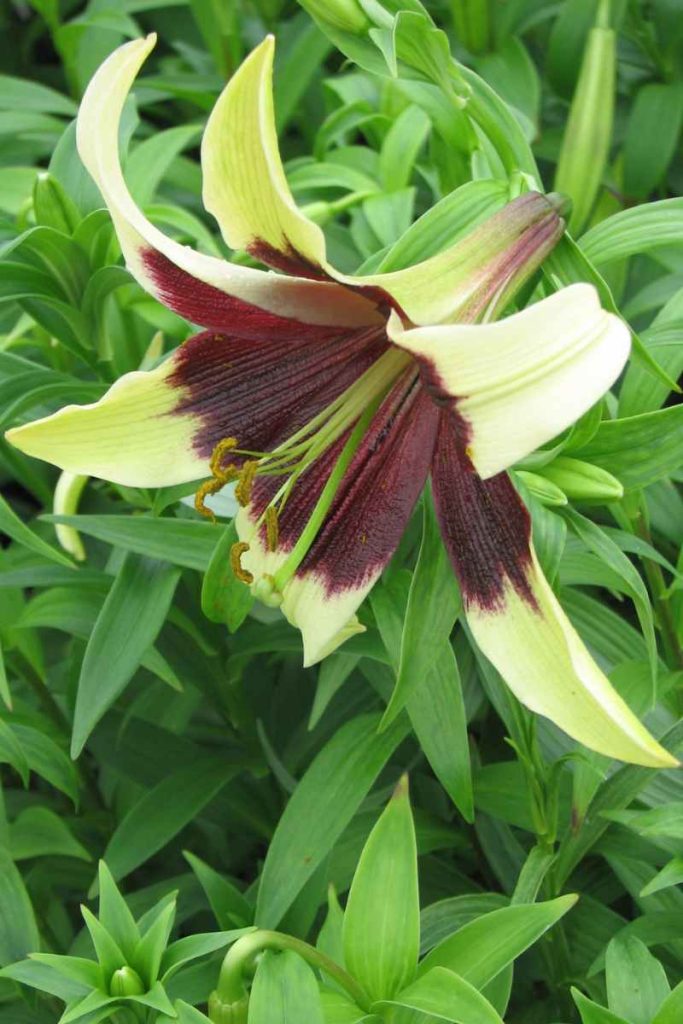
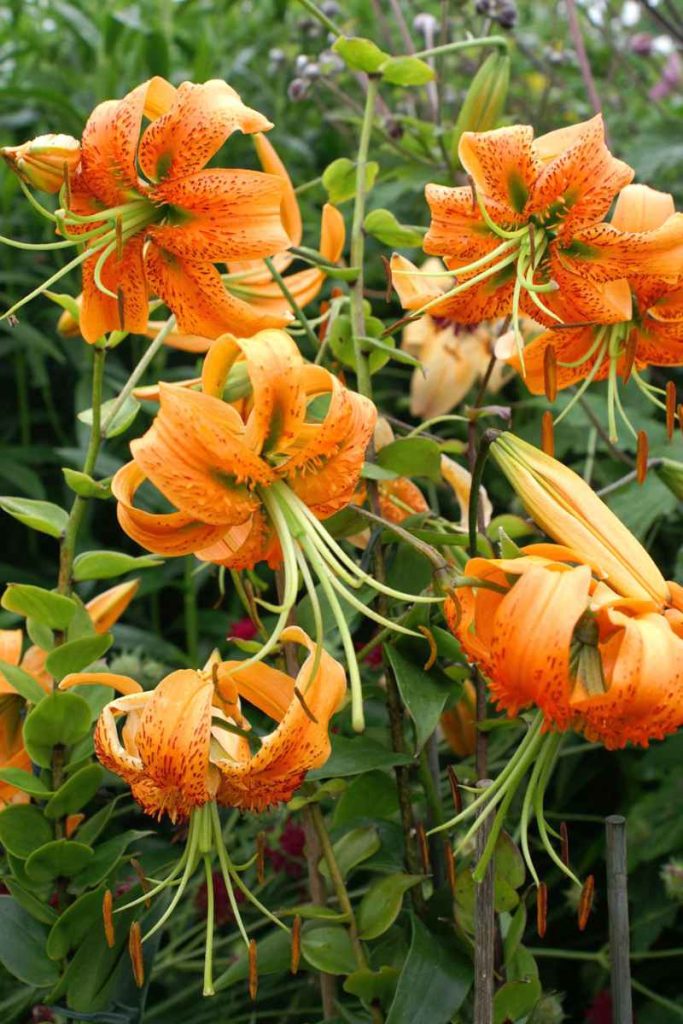
Tiger Lilies
Welcome these exotic tropical blooms to your garden. The large 8-12 cm (3-5”) reflexed blooms of tiger lilies will dance in the lightest of breezes and add rhythm and flow to mixed borders. Blooming in a range of colours from golden yellow to deep red and classic tangerine orange, they all have a black speckling on the petals that completes the signature look. Tiger lilies are a hybrid cross of tigrinum and lancifolium lilies and most are hardy to zone 2. This late summer garden favourite is a prolific multiplier as it produces both bulblets in the ground and stem bulbils that can be planted to grow into flowering-size bulbs.

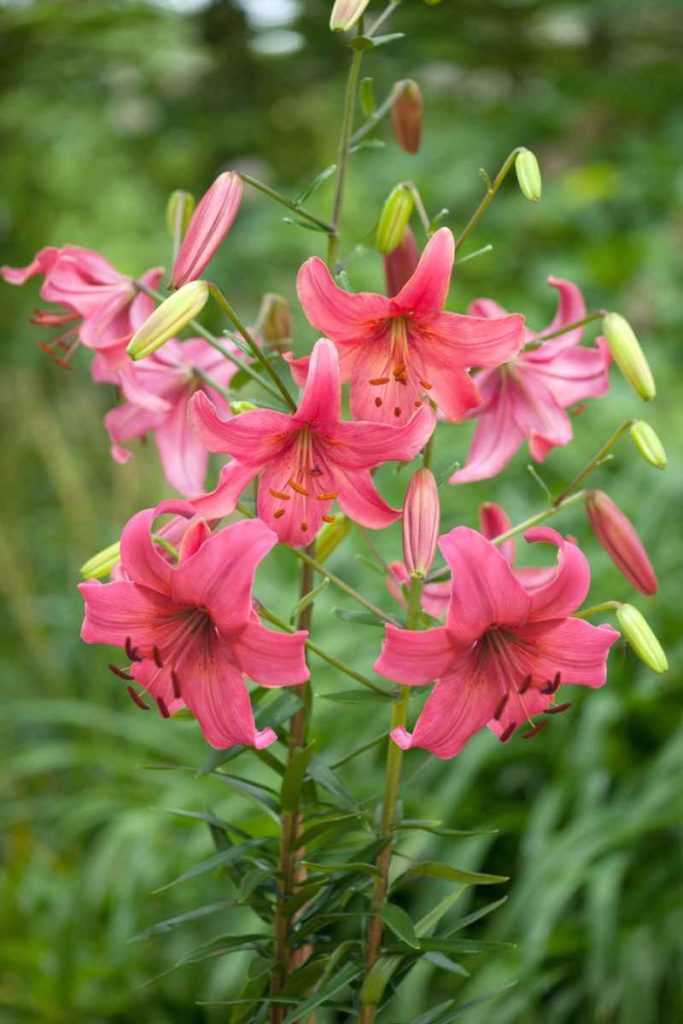
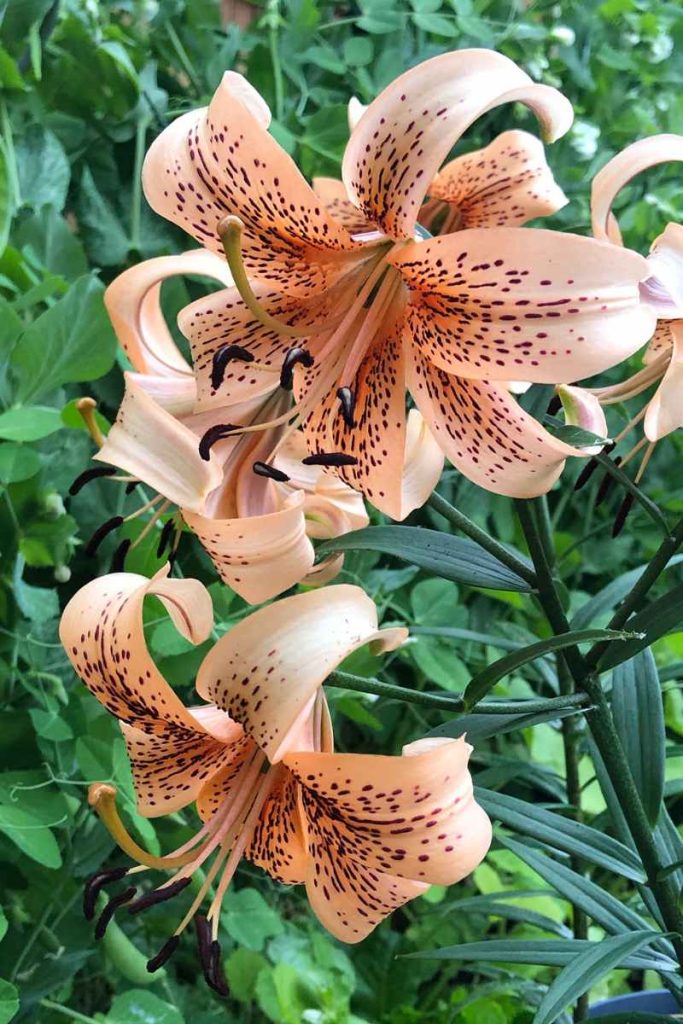
Trumpet Lilies
Announcing the middle of summer, Trumpet types are some of the largest flowering lilies. The giant, outward-facing blooms of trumpet lilies can grow 20-25 cm (8-10”) deep and 15-20 cm (6-8”) wide. These sweetly scented, nectar-rich blooms are a favourite for pollinators like hummingbirds, bees, and butterflies. Growing to heights of 100 cm (40”) and hardy to zone 3, make these lilies a welcome addition to large containers and mixed borders.
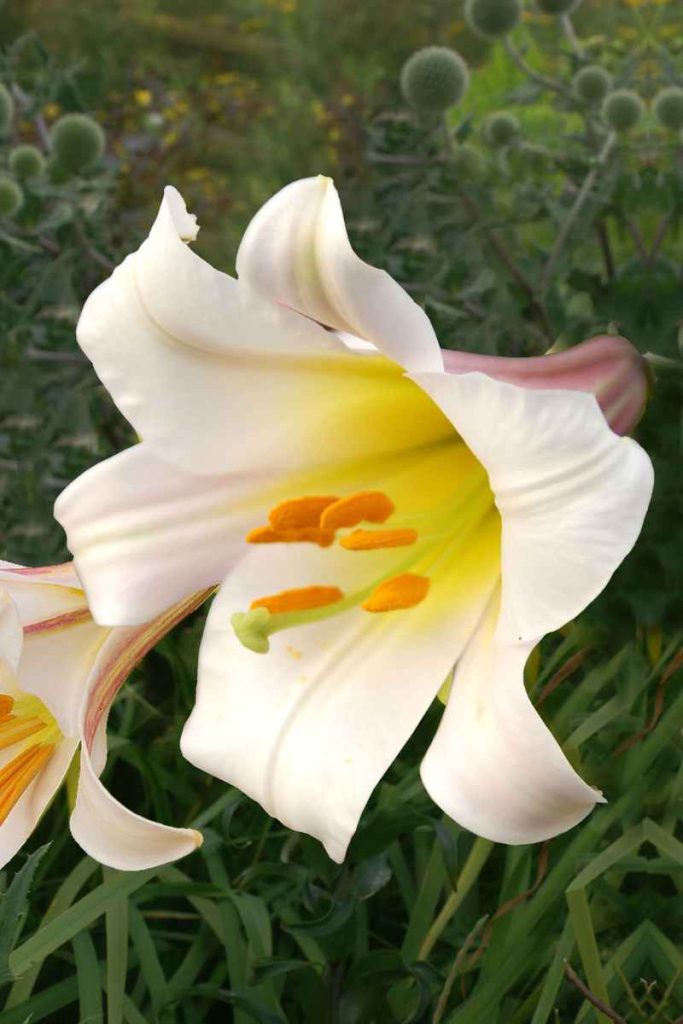
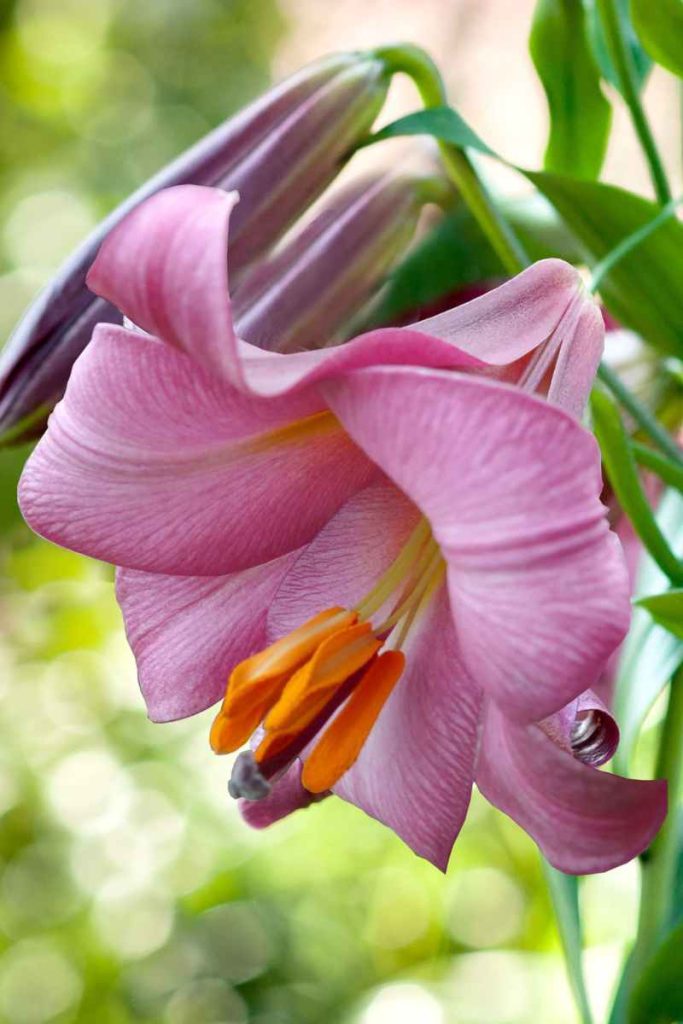
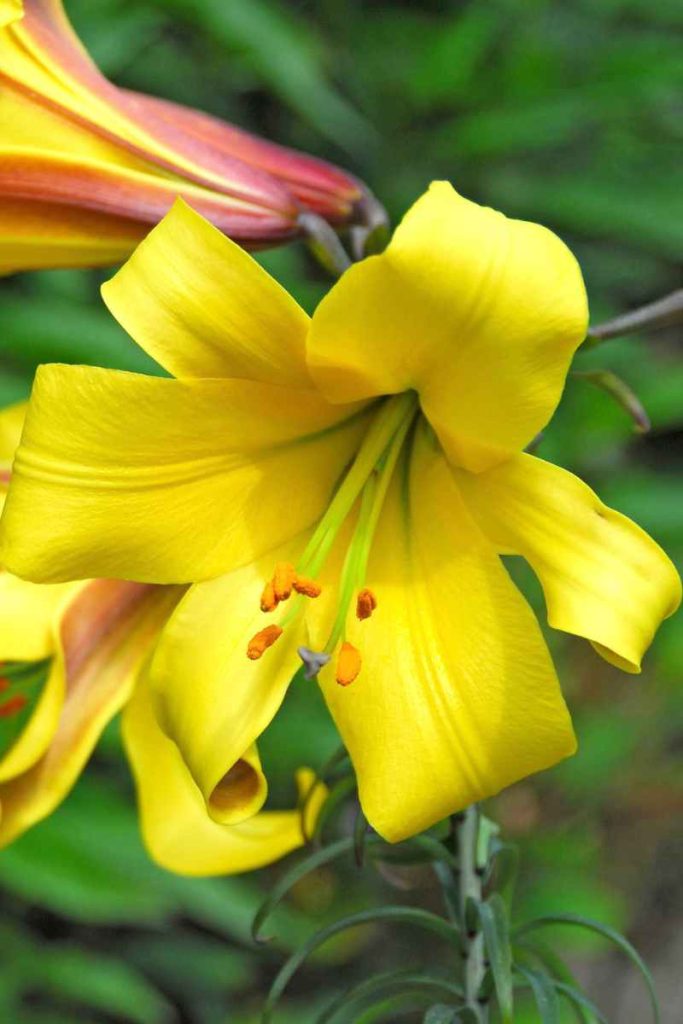
LA (Longiflorum x Asiatic) Hybrid Lilies
A new standard in long-lasting cut flowers! LA-type lilies are a success story from years of hybridizing to produce vigorous, strong-stemmed, disease-resistant plants. Producing an abundance of large, almost scent-free flowers in mid-summer. Growing to heights of 125 cm (50”) tall and hardy to zone 4 these plants are tall and sturdy. Producing 5-7 buds that open to upward-facing, 12-18 cm (5-7”) wide blooms they are a show-stopper for your full sun to partly shaded areas. A cut flower gardener’s must-have!


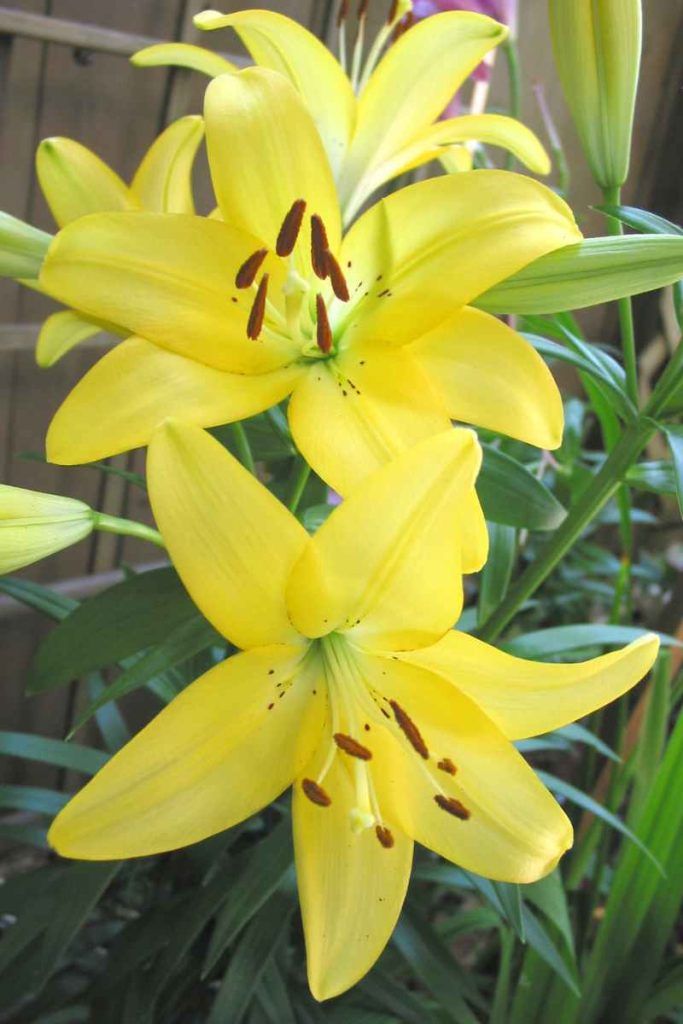
AO (Asiatic x Oriental) Hybrid Lilies
Colourful and exotic! A perfect blend of cheerful bloom colours and sturdy stems from Asiatic with the bloom size and form of Oriental. These hardy to zone 3 lilies reliably flower in mid-summer from July to August. The wide-open blooms atop 80-120 cm (32-48”) stems are an invitation for pollinators. All these great features make them a sure hit in the garden.
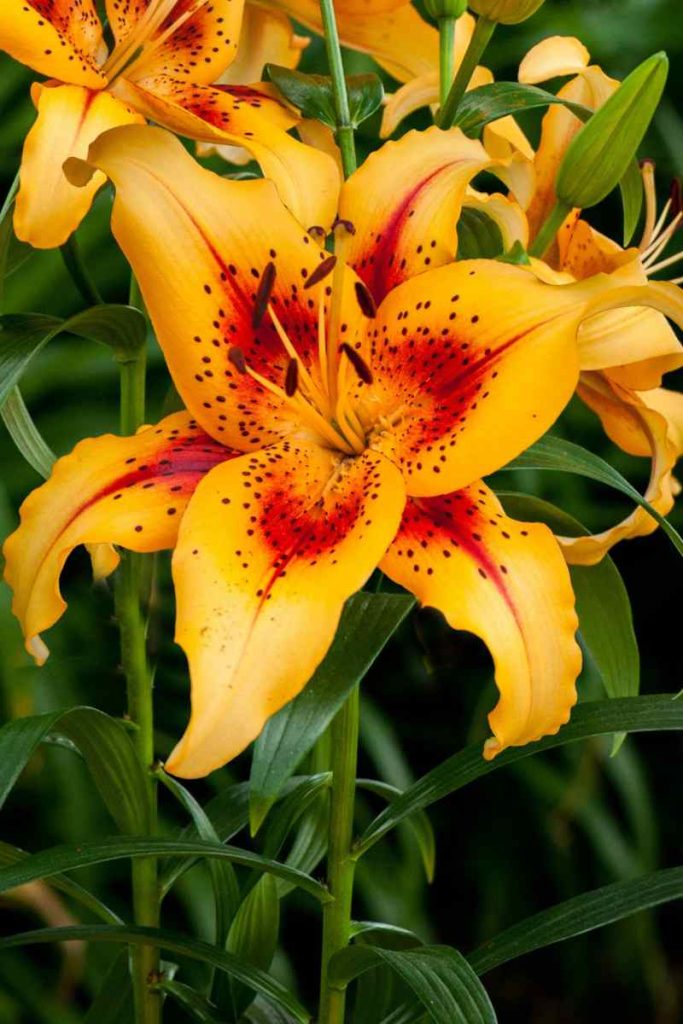

OT (Oriental x Trumpet) Hybrid Lilies – aka Lily Trees
These are what we call Oh My You’re Tall lilies! These lilies combine the best of both parents with a full range of colours from the oriental side and huge deep blooms from the trumpet side. An added benefit is the double dose of sweet and spicy fragrance from the blooms that are held firmly on stately, sturdy stems. When first planted, OT Lilies will grow to 120 cm (48”) with about 5-7 blooms, but in about 3-5 years you will see why they are known as lily trees. As OT lilies mature, they can grow to dizzying heights of 240 cm (8 ft) tall with stems that are 6.5 cm (2.5”) across and clothed with up to 25 blooms. This is very impressive, especially when you consider they grow to these towering heights in one season. In fall, when the bulbs are dormant, the stems are trimmed to the soil level. Then in spring, they will start growing new stems to be loaded with blooms again. Hardy to zone 3, these easy-to-grow garden plants love full sun to partly shaded areas. Plant in spring and watch in amazement as the blooms open from late July through September.
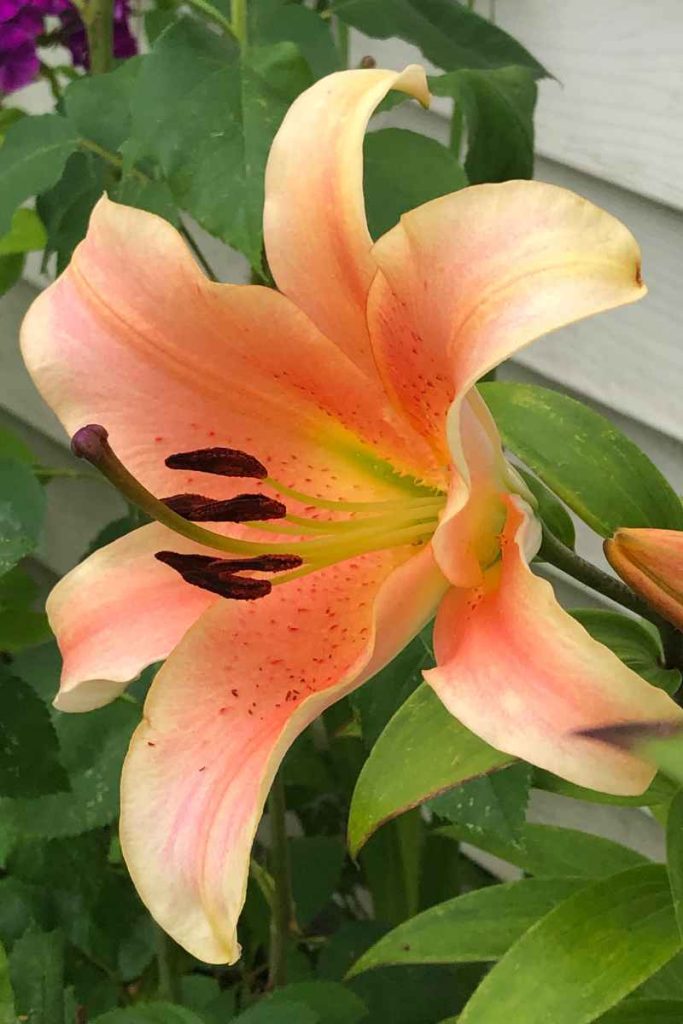
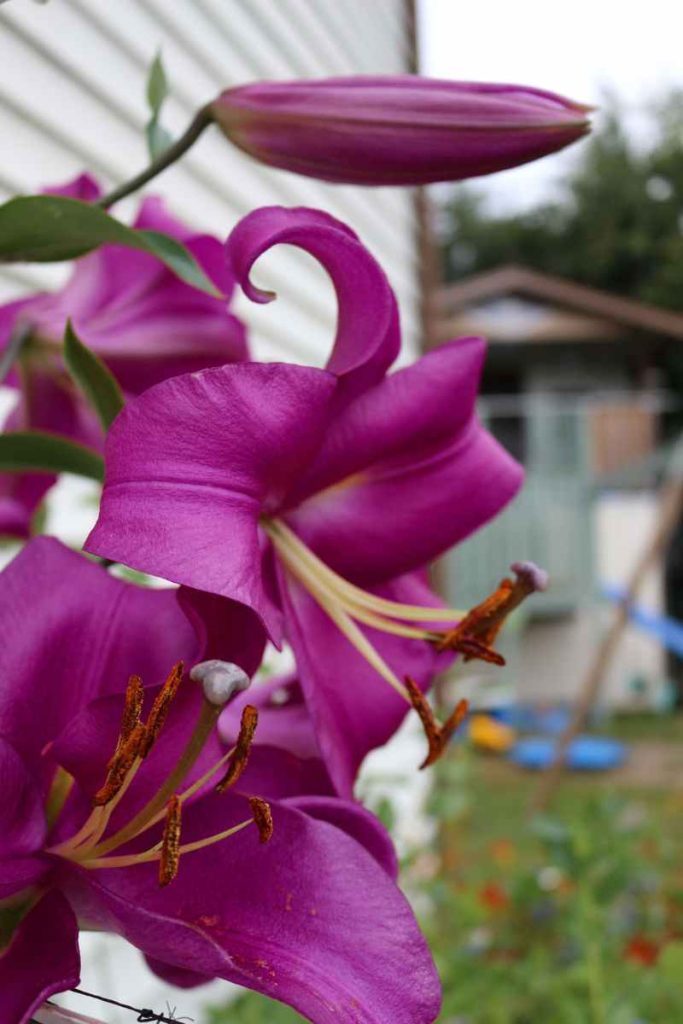
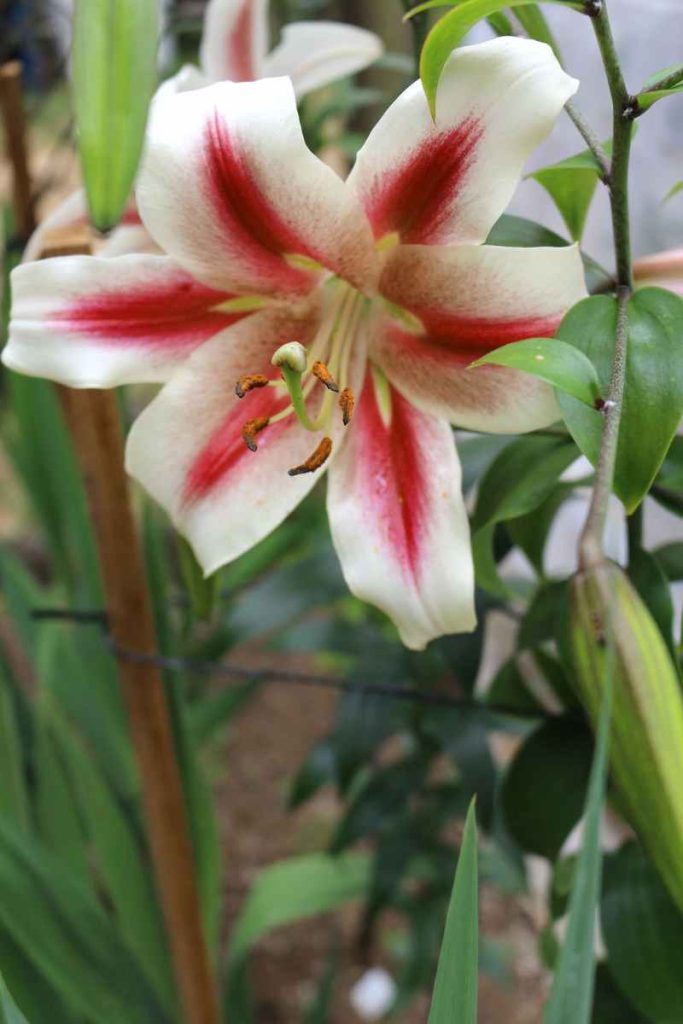
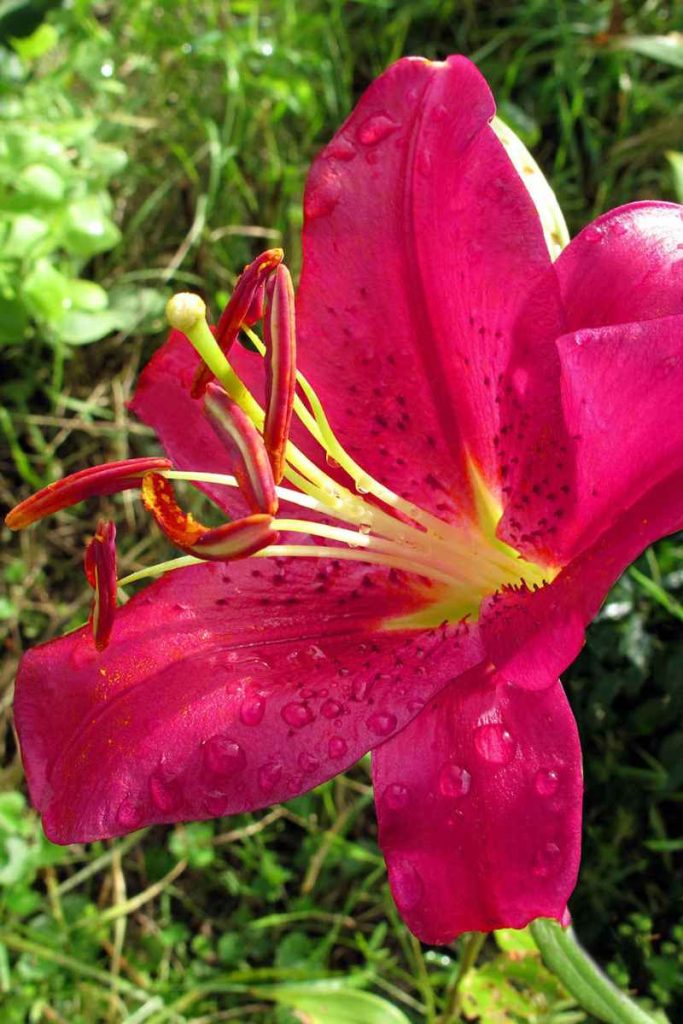
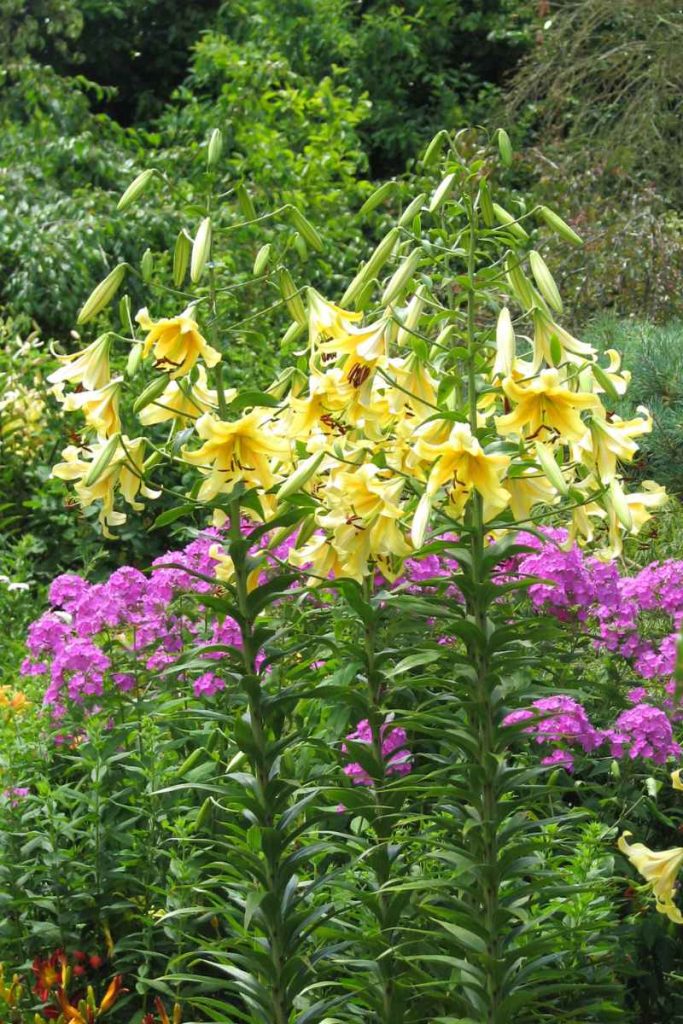
So now that you know the main types of lilium for the garden, you may be asking how to care for them. Thankfully these lilies are very easy and low maintenance to grow and have success in the garden.
Lilies sprout up lush new foliage each spring and produce large blooms in shades of white, pink, purple, red, coral, and yellow. The blooms vary from very fragrant to a slight scent. Once the blooms have faded, remove the seed pods and allow the leaves to continue to grow. Then in the fall, they die back to the ground, and you can prune the old stems to the soil level. True lilies are very hardy perennials as most are hardy to zone 2 or 3.
When to Plant Lilies
Lilies should be planted in early spring once all danger of frost has passed and the soil has begun to warm up a bit. You can also start them in containers indoors and transplant them outside from late spring through early summer. Lilies are winter hardy in many growing regions of Canada, but like any plants that are long-lived perennials, you want to set them up for success from the beginning and that requires workable soil for new roots to grow.
Where to Plant Lilies
Lilies should be planted in a sunny location with well-draining rich soil. Lilies will multiply in the ground, so many sure to loosen and amend the soil before planting. Remember to allow lots of room for the bulblets to develop. Give the bulbs extra space when initially planting. Preferring soil that is slightly acidic to neutral pH, they can benefit from a slow-release fertilizer in late spring. Lilies perform wonderfully with at least 5-6 hours of sun a day. Plant the tall OT lilies at the back of the border and the shorter patio Asiatic and patio Oriental types near the front of your borders or in containers.
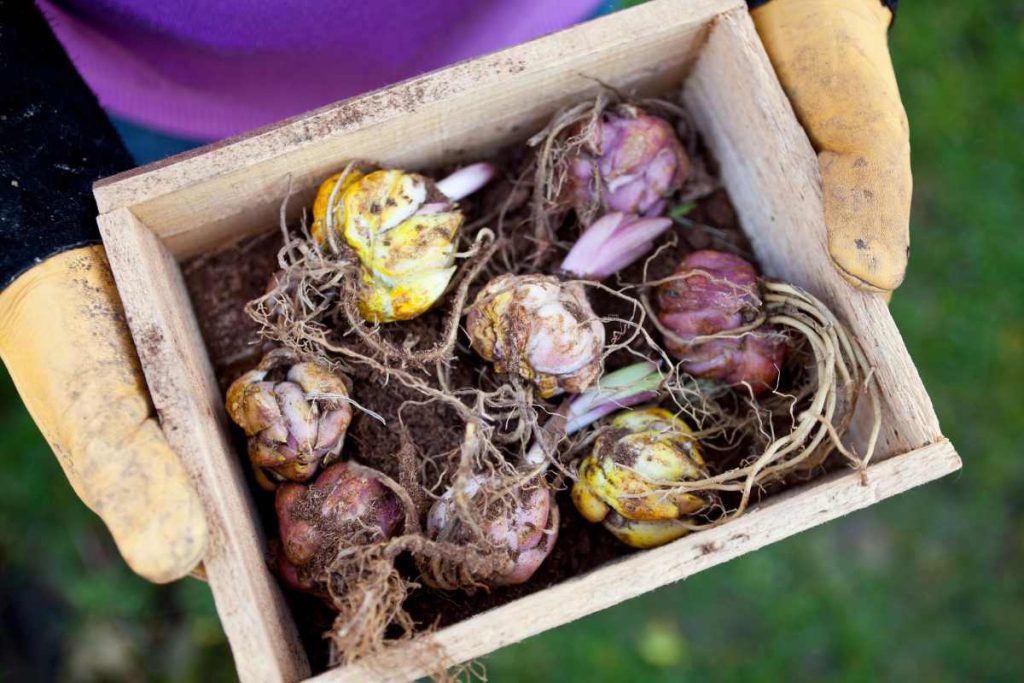
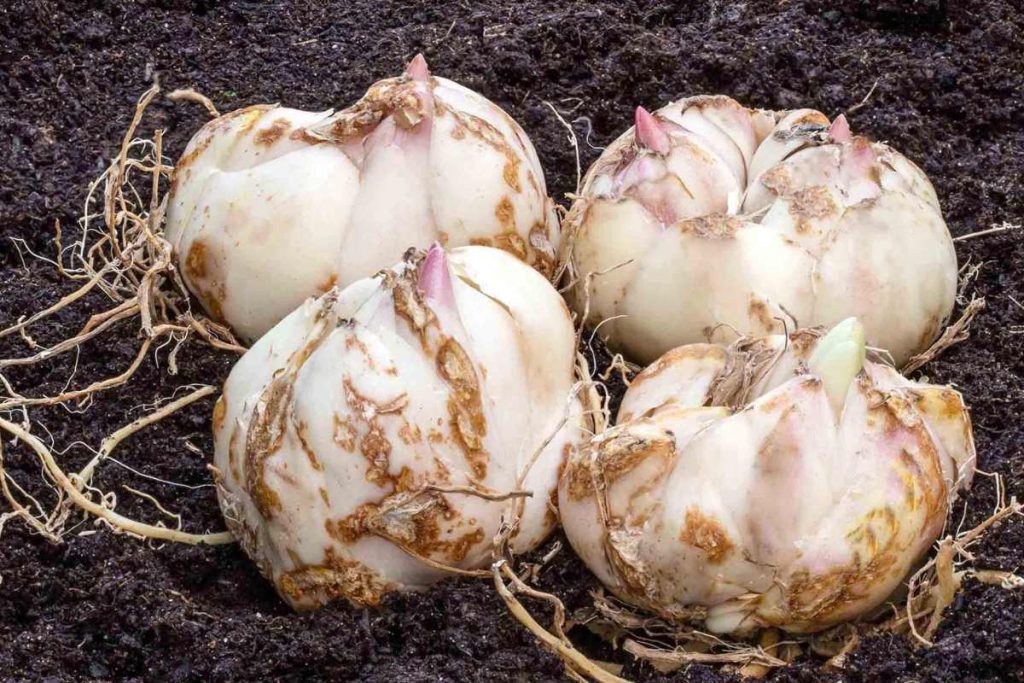
How to Plant Lilies
It is important to get the bulbs planted properly from the start. Lilium bulbs have thick fleshy scales, that allow excess water to escape, so it is important to have well-draining soil. Start by loosening the soil to 20 cm (8”) and amend the soil with compost, well-rotted manure, and sand prior to planting. Place the bulbs in the soil roots down and pointy side up at 10-15 cm (4-6”) deep and 20-30 cm (8-12”) apart. When planting dwarf varieties in containers, you can plant the bulbs closer and a bit more shallowly, knowing that they will be in the container for a season or two. Taller growing varieties should be planted at least 15 cm (6” deep) to deeply anchor the roots. In cold regions, if you add mulch to your flower beds over winter, be sure to remove it before the lilies start to sprout in spring. We recommend planting lilies in clusters of 3 or 5 bulbs to create focal points.
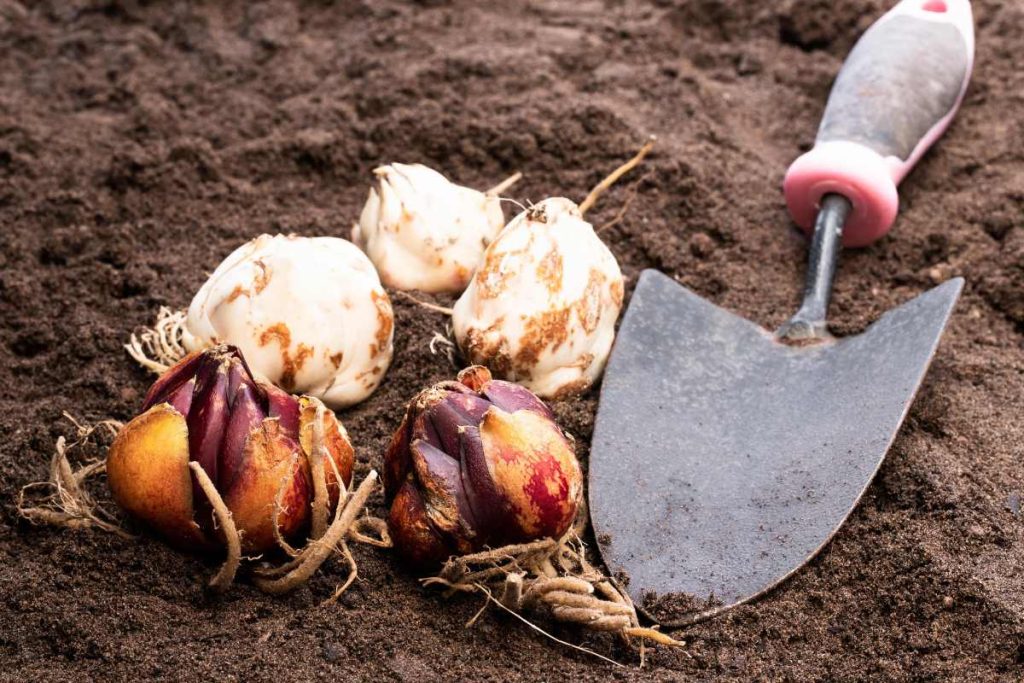

When to Divide Lilies
Lilies are long-lived perennials; they multiply by producing bulblets in the soil that grow quickly into flowering-sized bulbs. Overcrowded clumps of bulbs will compete for resources, reduce the flowering, and lack of airflow can promote disease. So, every 3-5 years you will want to divide your cluster of lilies. The best time to divide the clumps of bulbs is when they are just starting to go dormant, which may be late summer or fall. Once the stems and foliage start to turn yellow, it is a sign that the bulbs are getting ready to relax over winter. So, this is the ideal time to carefully dig up the mound of bulbs, separate them, share them with friends and replant before winter.
How to Care for Lilies
Watering
When it comes to hydrating lilies, they should be kept moist but not soggy. As with all plants, water at the soil level to avoid getting water on the leaves and flowers. During the summer it is best to water early in the morning or in the evening. When your lilies are in full bloom you may need to water daily, especially during the hot spells of summer. Remember lilies planted in containers will need more frequent watering than those planted in the ground.
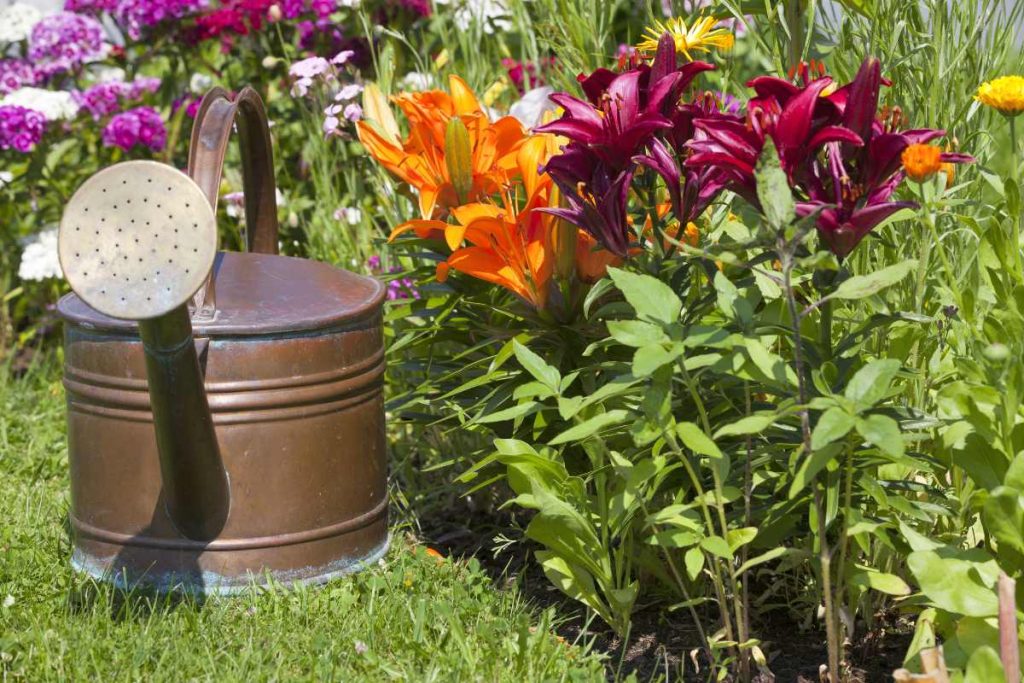
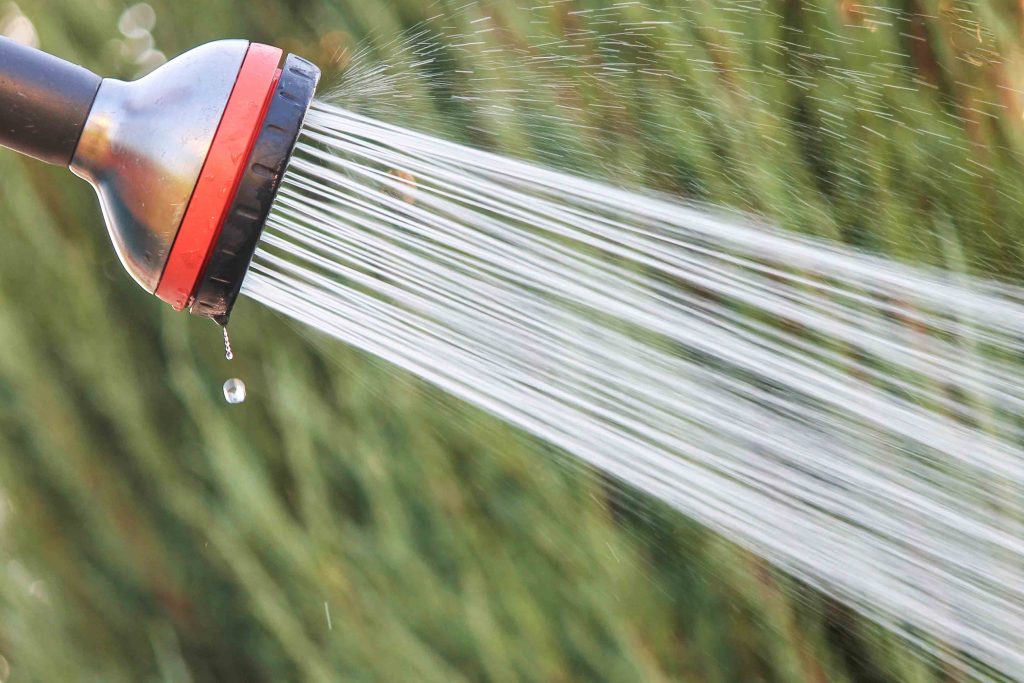
Fertilizing
In late spring, add a balanced (10-10-10), water-soluble, slow-release fertilizer to areas you have your lilies planted. Then they will have the nutrients they need for success all season long.
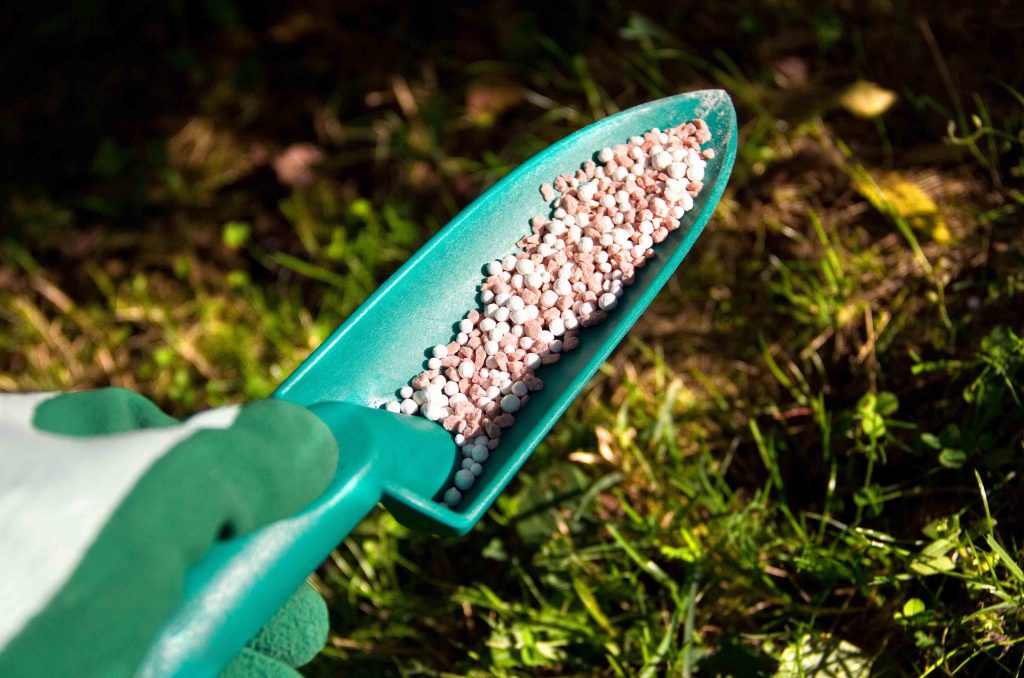

Deadheading
As the blooms fade and the petals fall, remove spent flowers and the thickening seed pods to prevent seed production. Lilies multiply quicker by producing bulblets in the soil, so if you allow your lilies to go into seed production it will redirect plants’ energy that would be better stored in the bulb. After the lilies have finished blooming, continue to water as the plant is still working and generating nutrients which will be stored to produce next year’s stems and flowers. Once the foliage turns yellow that is a sign that it is going dormant, and you can now trim the stem to the soil level.
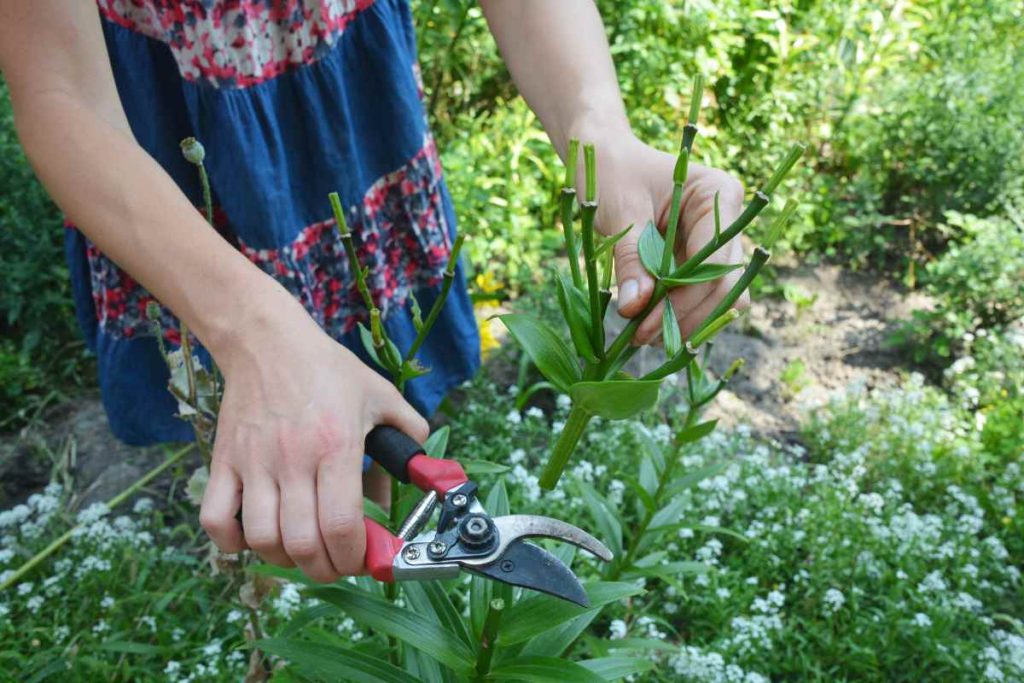
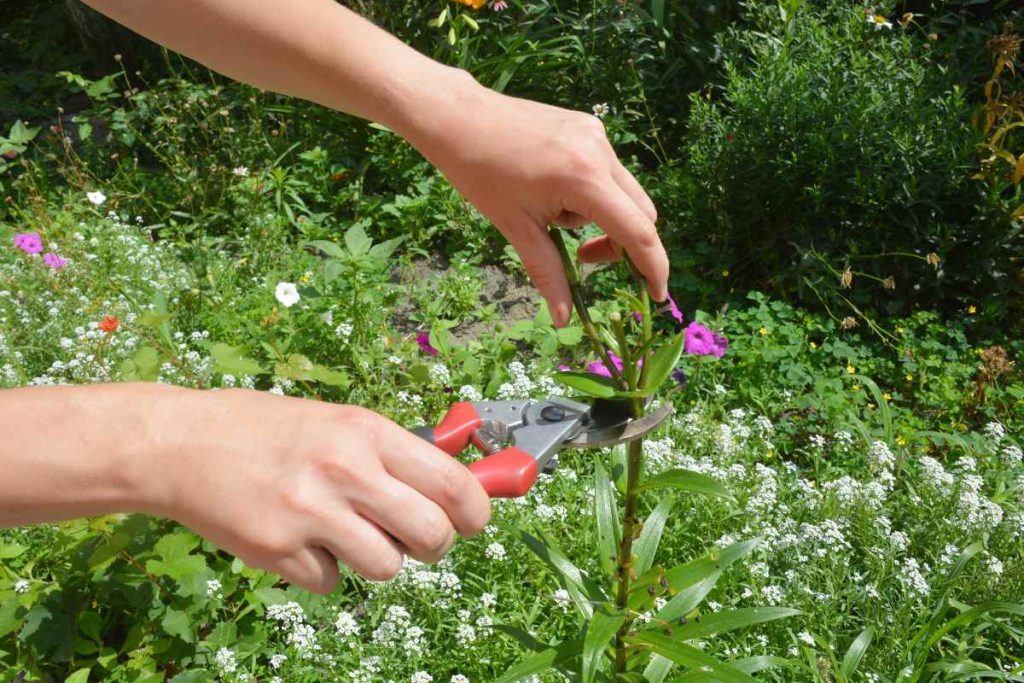
Winter Care
If you carefully select lilies that are hardy for your area then winter care is a breeze, and you can rest and relax. If you are in an area where your lilies are on the cusp of being hardy, be sure to add 5-8 cm (2-3”) of mulch (straw or shredded leaves) before the winter snow sets in. Remember to carefully remove the mulch in spring. If your lilies are not hardy for your area, then you hopefully planted them in containers that you can move to a protected area (shed, garage, greenhouse) over winter. Remember it is the dry winds that you want to protect your lilies from, and snow works as an insulator. So go ahead and pile up the snow on your flower beds and containers.
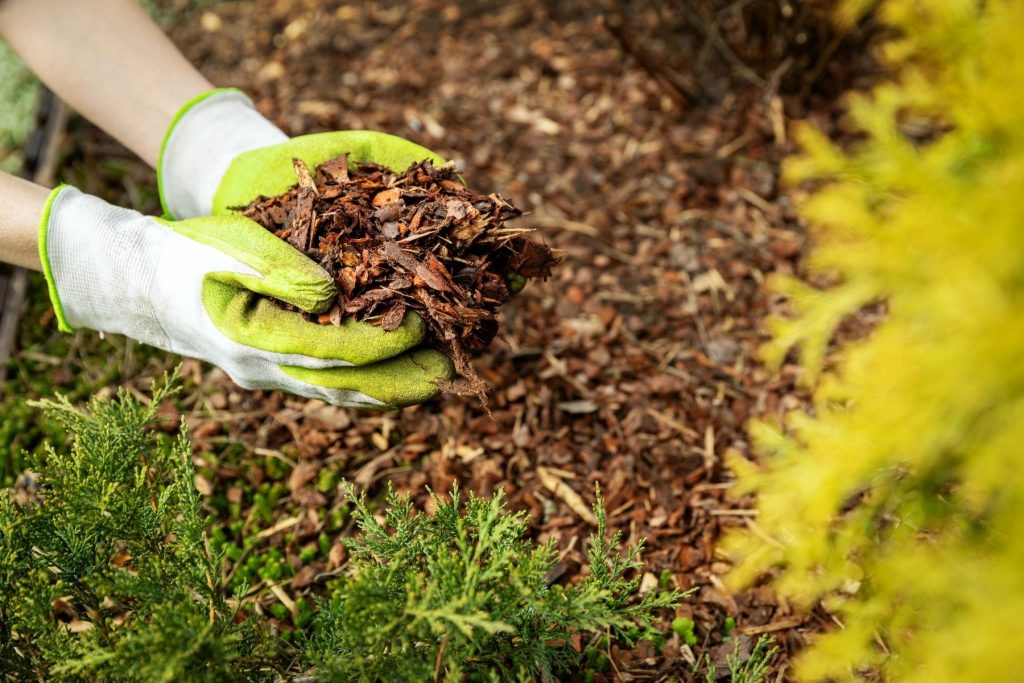

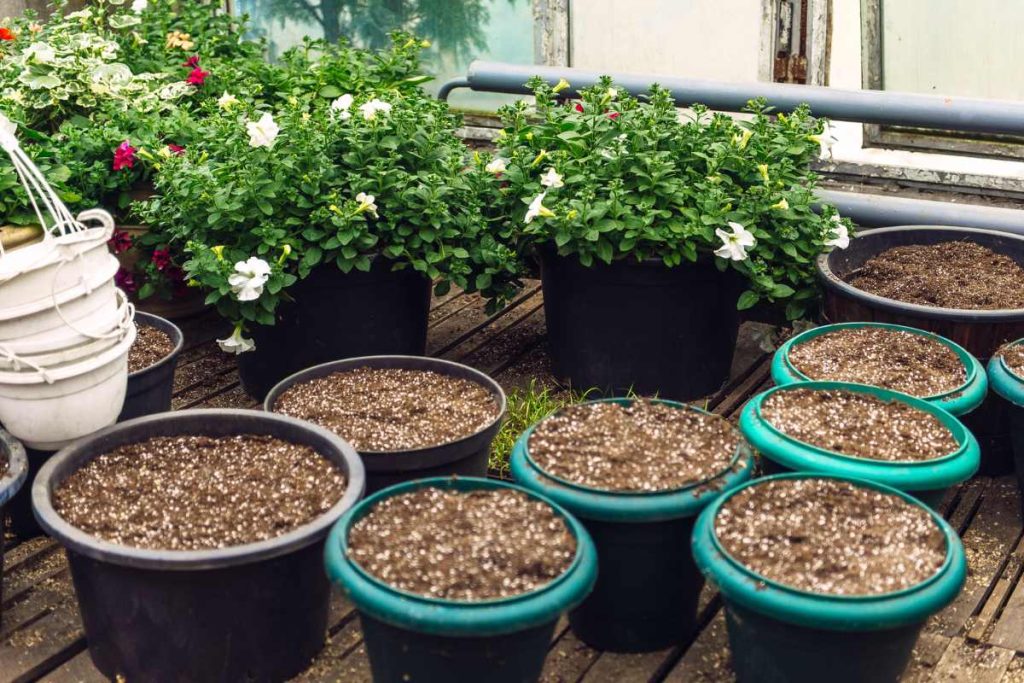

Pests
Lilies are low-maintenance and easy to grow, but there are a few pests that can hinder their success in your garden.
Slug and Snails
Young fresh shoots seem to attract slugs and snails. We recommend keeping a watchful eye and removing them as you see them. Or you can use your favoured method of dealing with these voracious slime-trail-leaving garden guests.
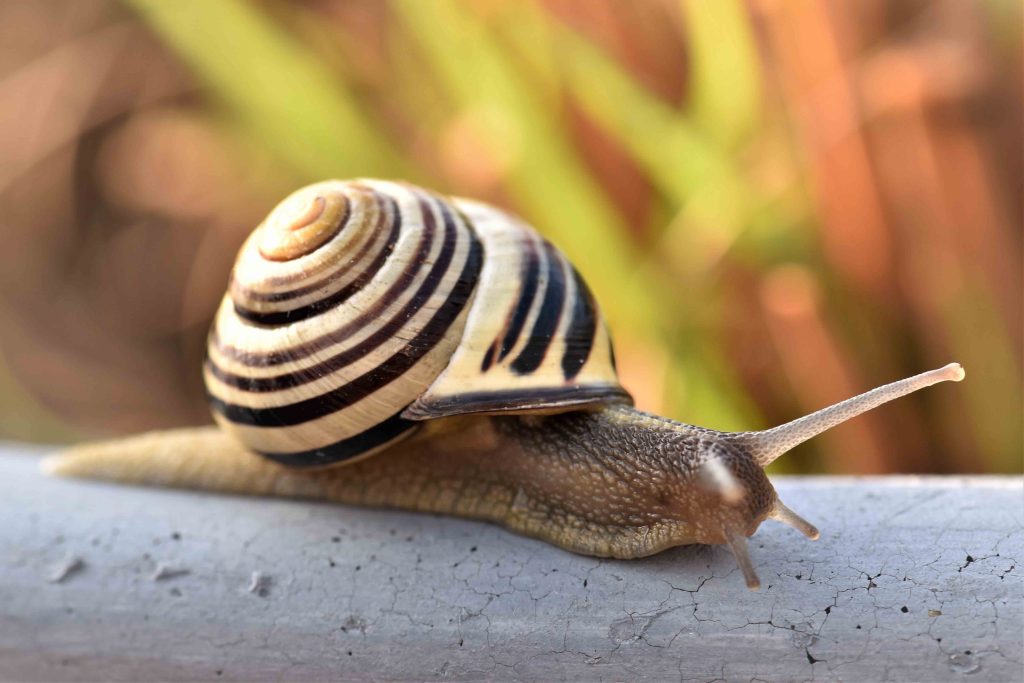
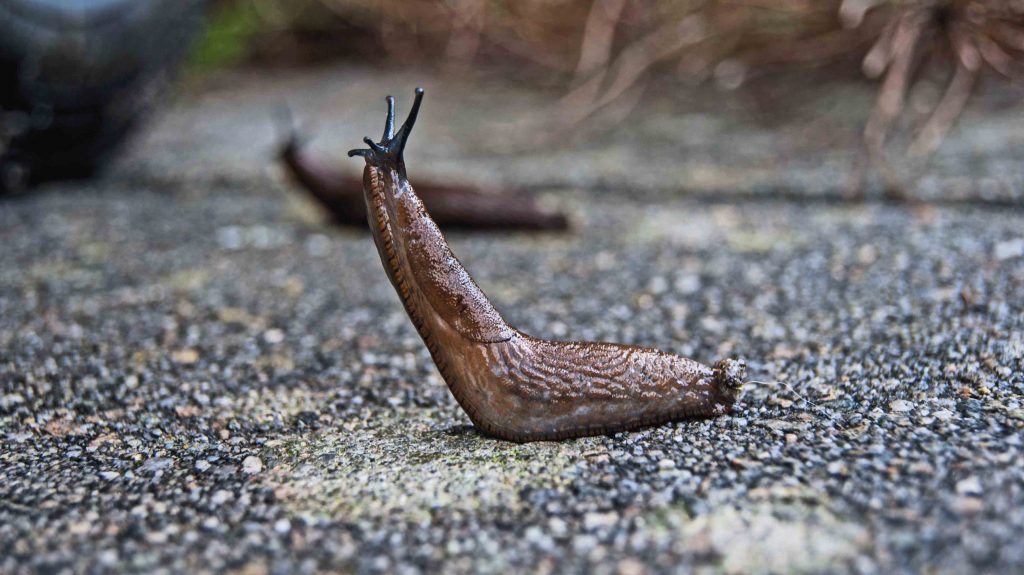
Lily Beetles
The lily beetle is a known garden pest in certain areas of eastern and central Canada. Not to be mistaken as the beneficial cardinal beetle or unspotted lady beetles. The lily beetle will search for a favourite host plant, usually lilies and fritillaria, and damage it by munching on the leaves, stems, buds, and flowers. Currently, the only defence is to diligently check the new growth for signs of attack and remove the larva and adult red beetles. Lily beetles overwinter in the soil and emerge in spring. They lay eggs on the underside of the leaves. Then in 1-2 weeks they emerge as yellow, brown, or red larvae to feed for about 3 weeks, then burrow into the ground to pupate. Then the cycle starts again… so it is best to be proactive and address any issues early in the season.

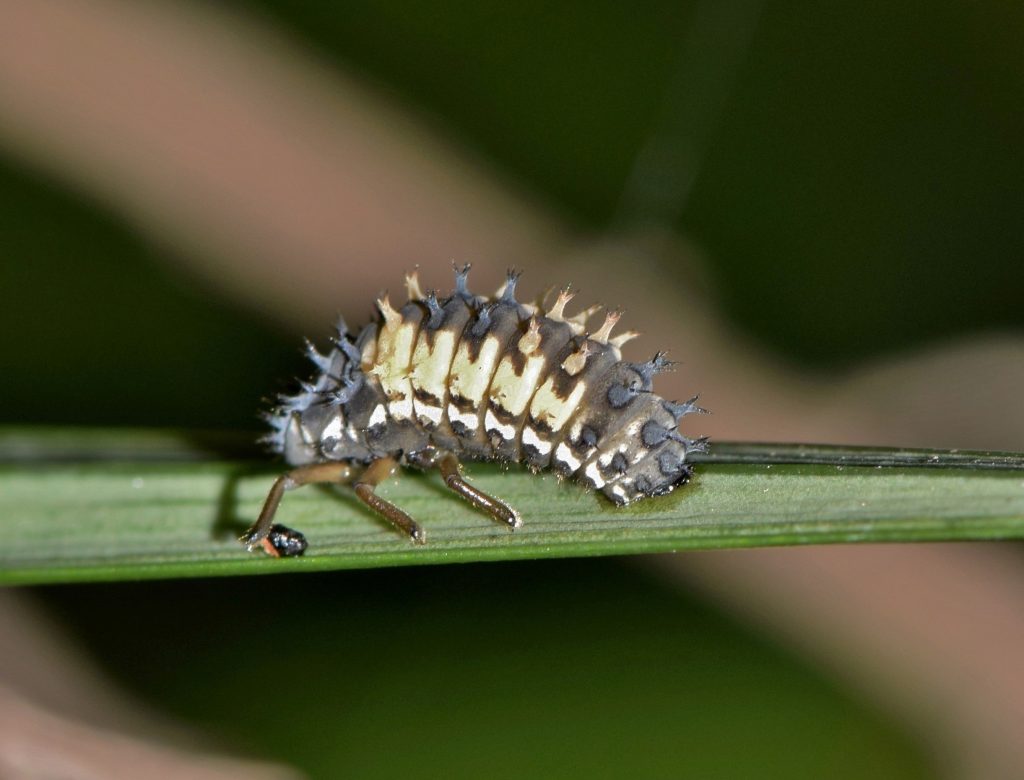
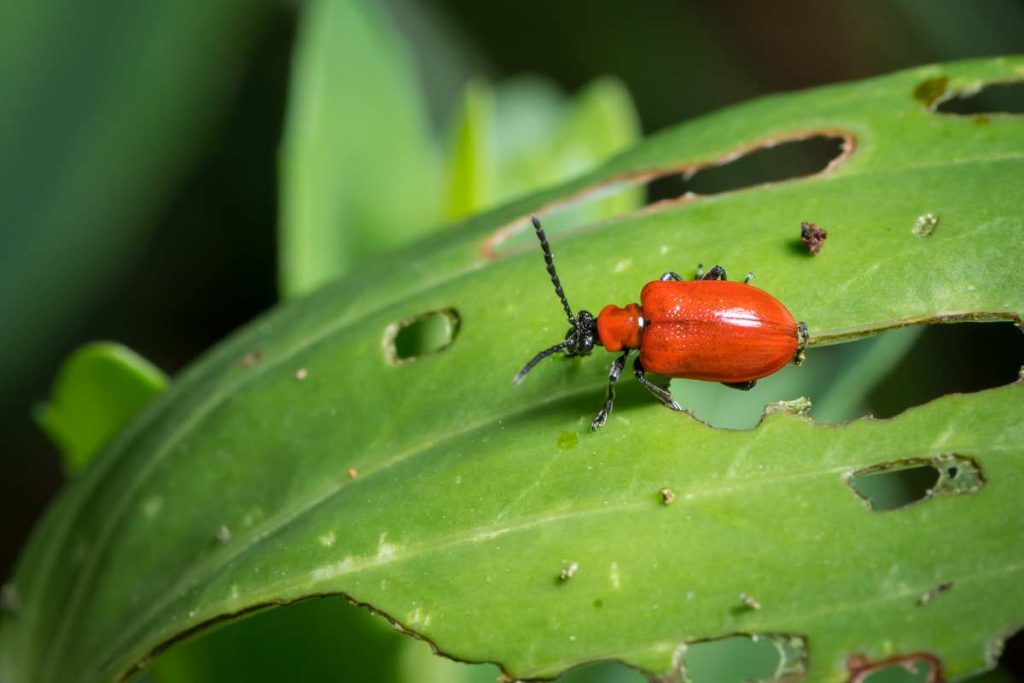
Garden Visitors
Kids with soccer balls and large dogs with active tails are not so much as pests but you need to be careful all the same. As lilies grow all the buds initially form at the top of the stem. So, if someone or something accidentally breaks off the top of the stem, take a moment to lament the loss of the blooms this season. But remember all is not lost, allow the stem and foliage to continue to grow and next year you will have even more blooms to enjoy.


Harvesting Lily Cut Flowers
Lilies are a wonderful addition to cut flower bouquets! Lilies will only give one stem of blooms per year, so you will want to plant lots of bulbs for bouquets and to enjoy in the garden. Cut lilies early in the morning or late in the evening. Remember to only cut a maximum of half of the stem height so enough leaves and stem remain to generate nutrients to produce next year’s flowers.
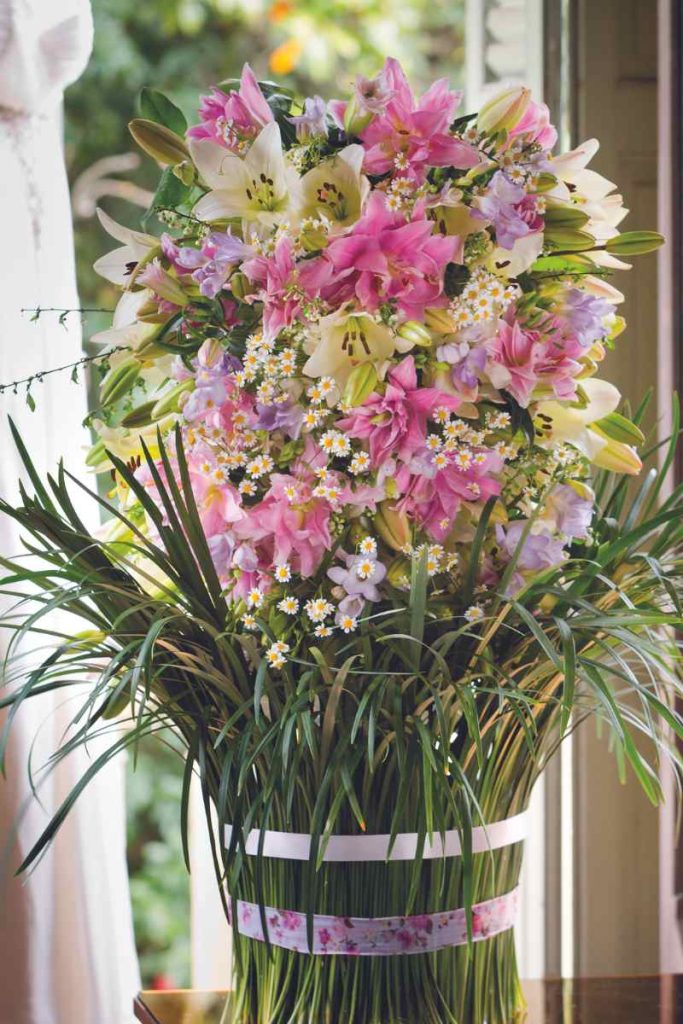

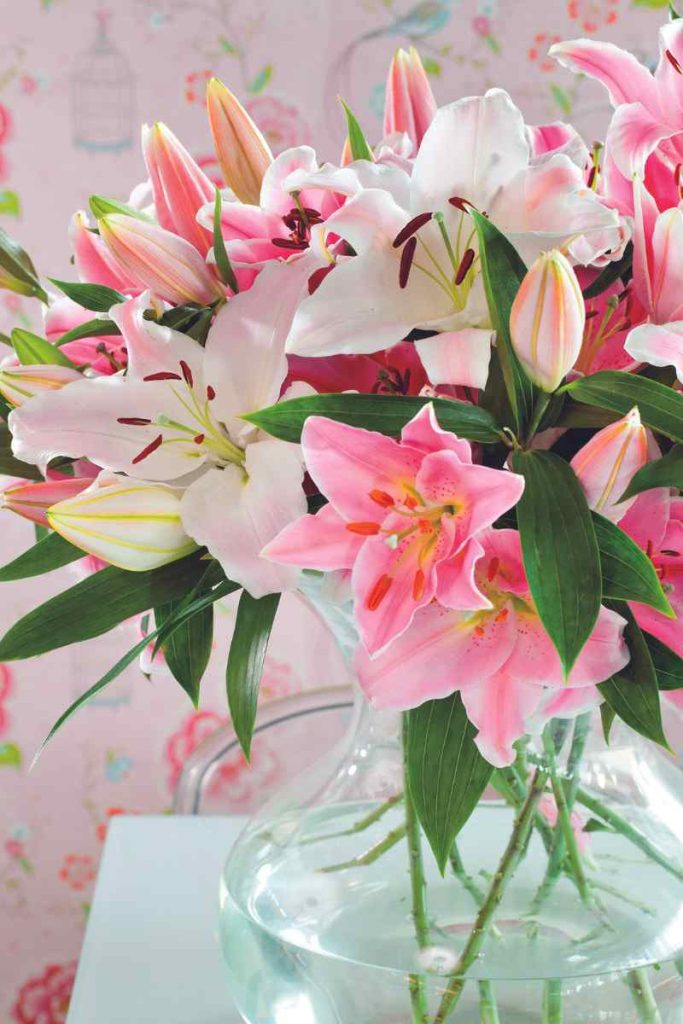

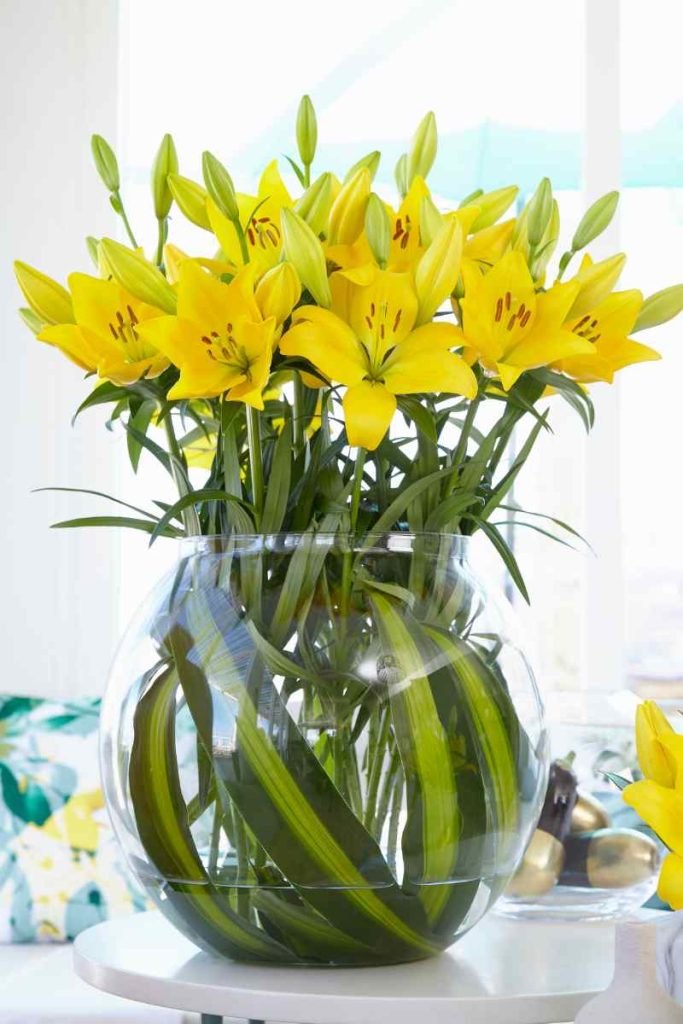
Select stems where the lowest bud is in full colour or has just opened. Remove any leaves that will be immersed in the water of the vase. Fresh-cut lilies can last for 10-14 days. Lily pollen can stain clothing and tablecloths, so as the buds open remove the anthers (where the pollen is formed) with a tissue.
Lilies are easy-growing, low-maintenance perennial bulbs that will last for years in your garden. Go ahead and be delighted by the petit patio-sized Asiatic varieties, the giant OT (Oriental x Trumpet) types and the lush double Roselily blooms. Then share your garden joy with cut flower bouquets for friends and neighbours!
Looking for some of these amazing varieties? Contact Florissa to Find a Retailer near you!


